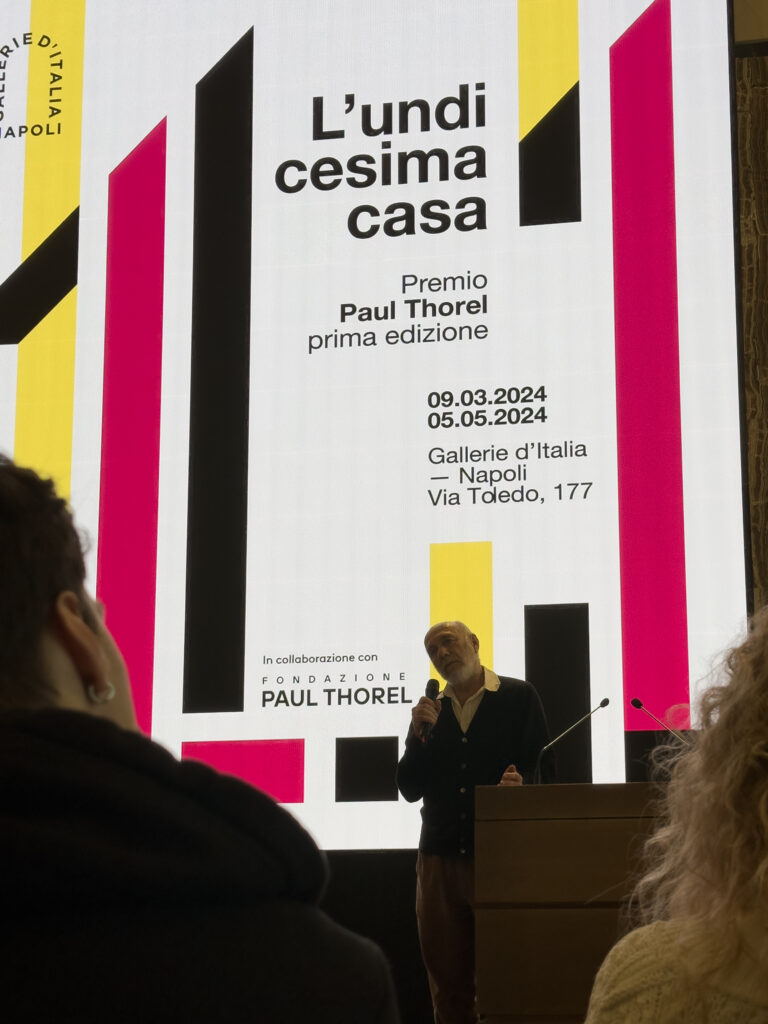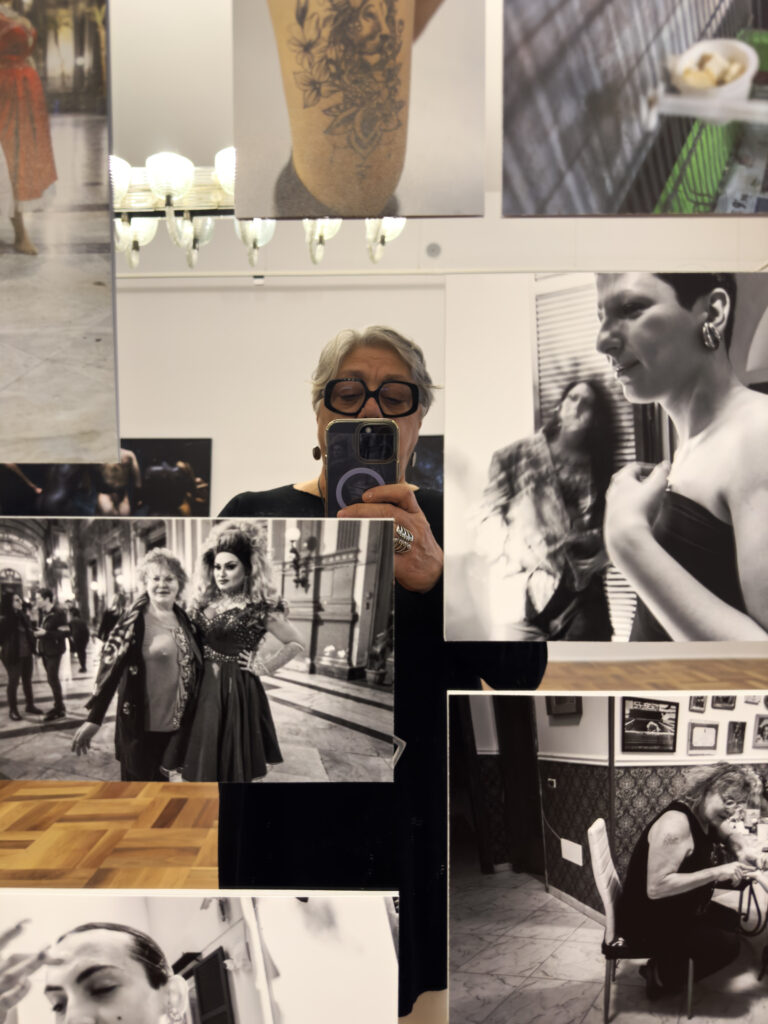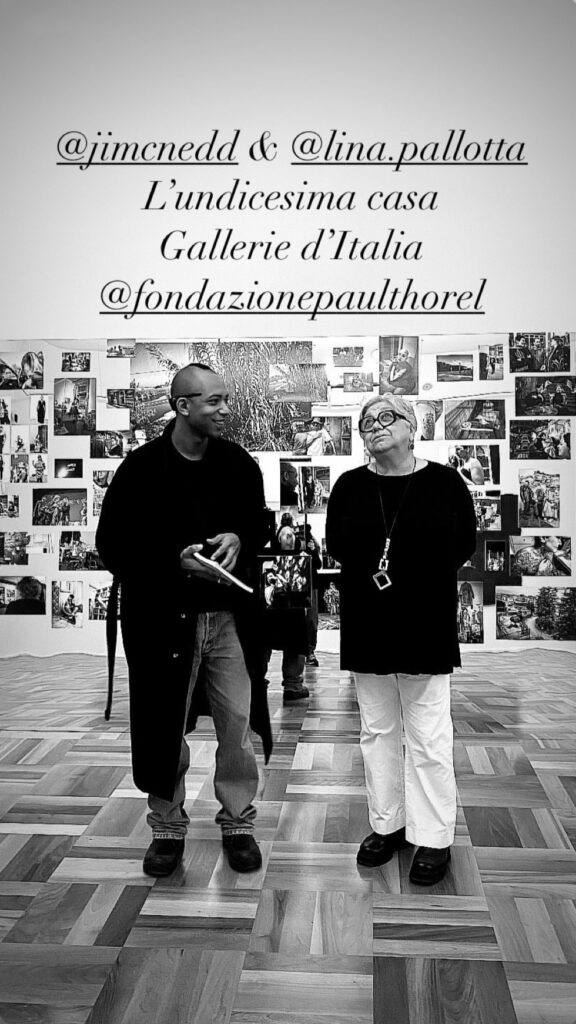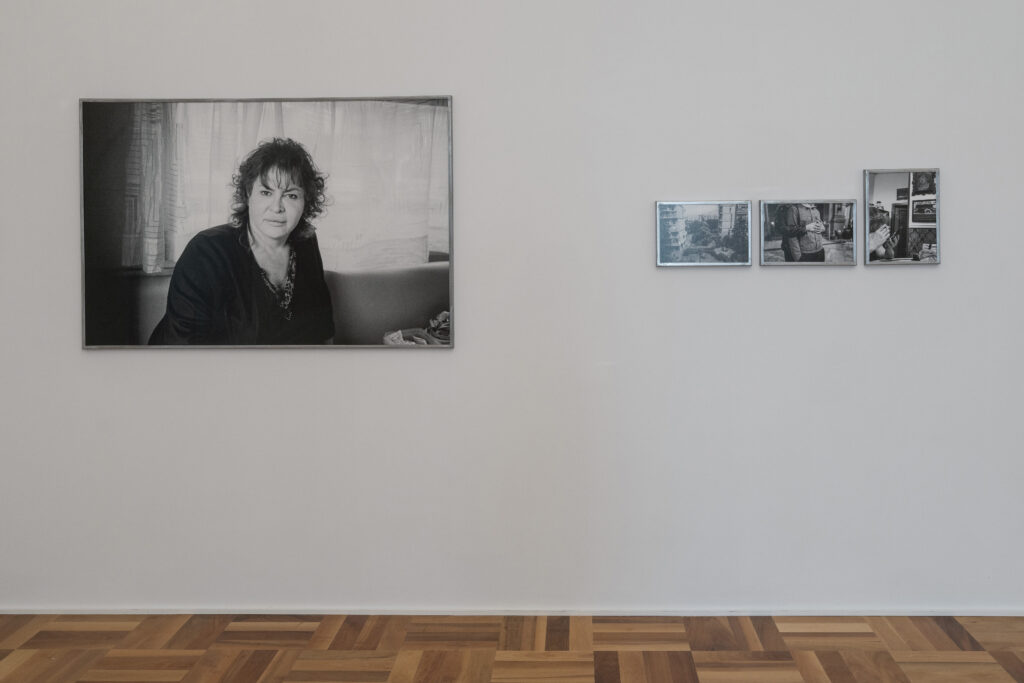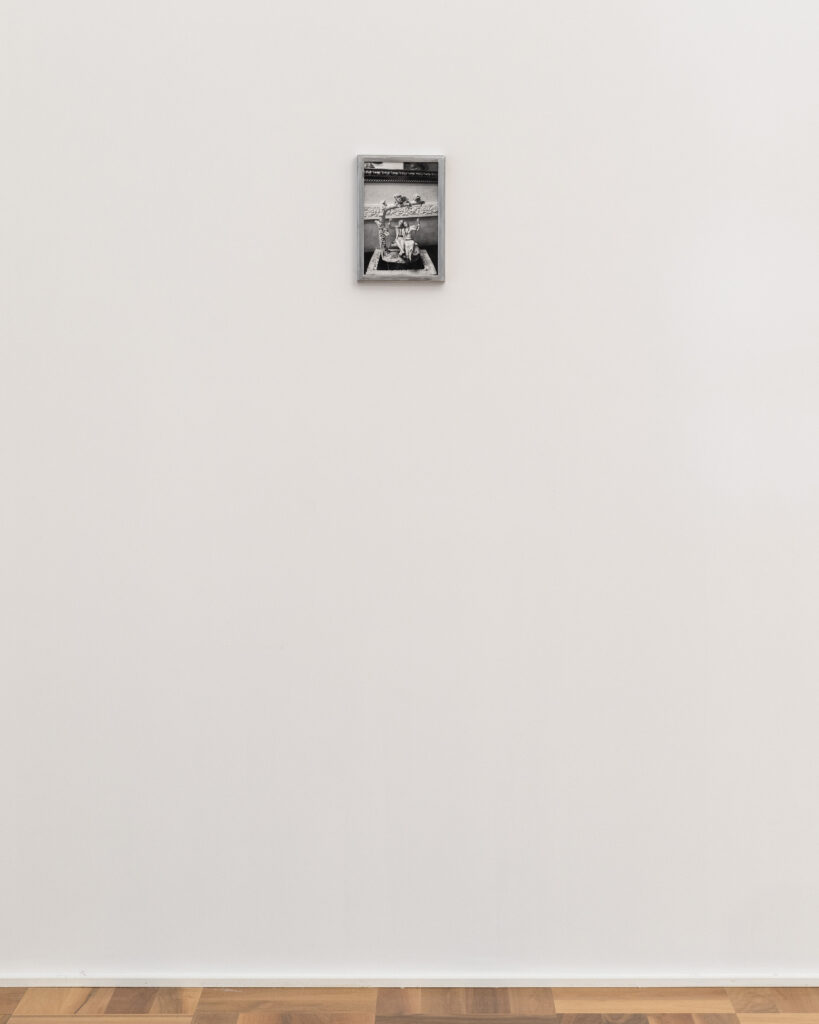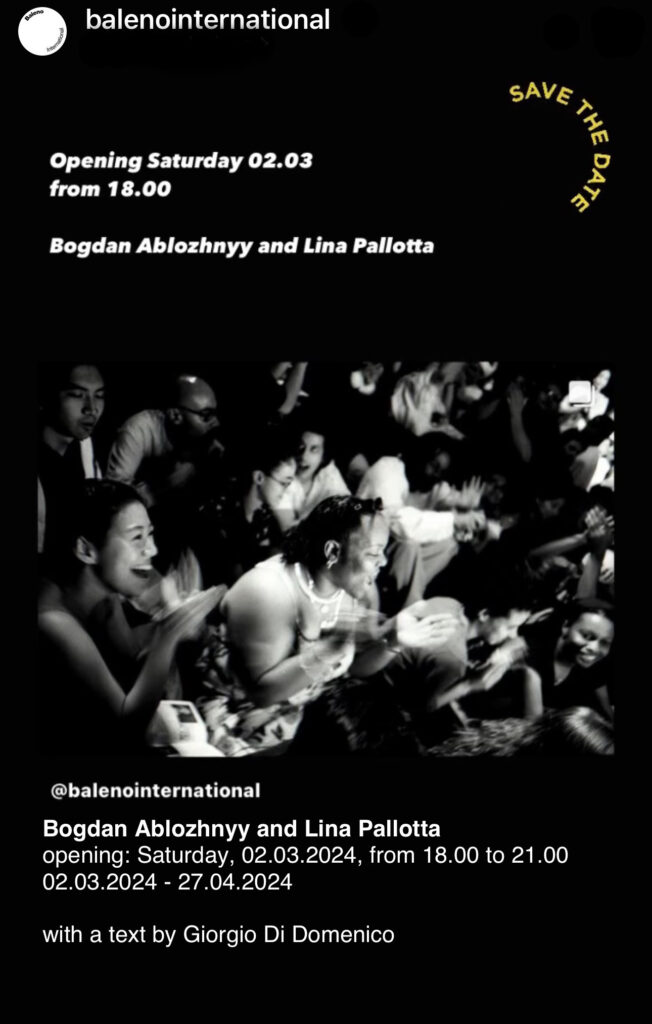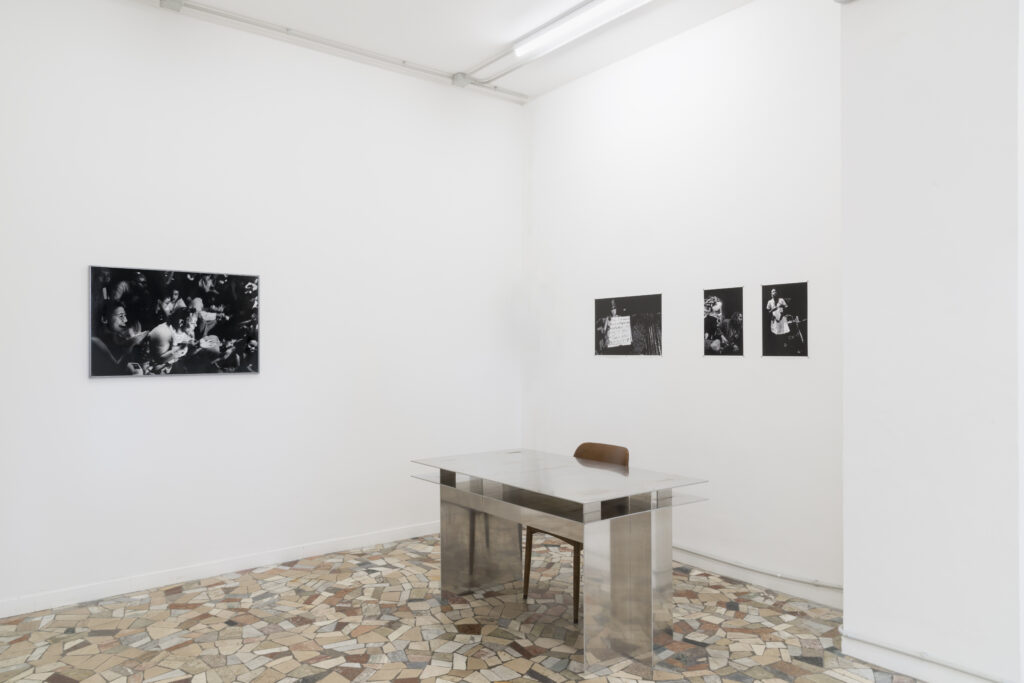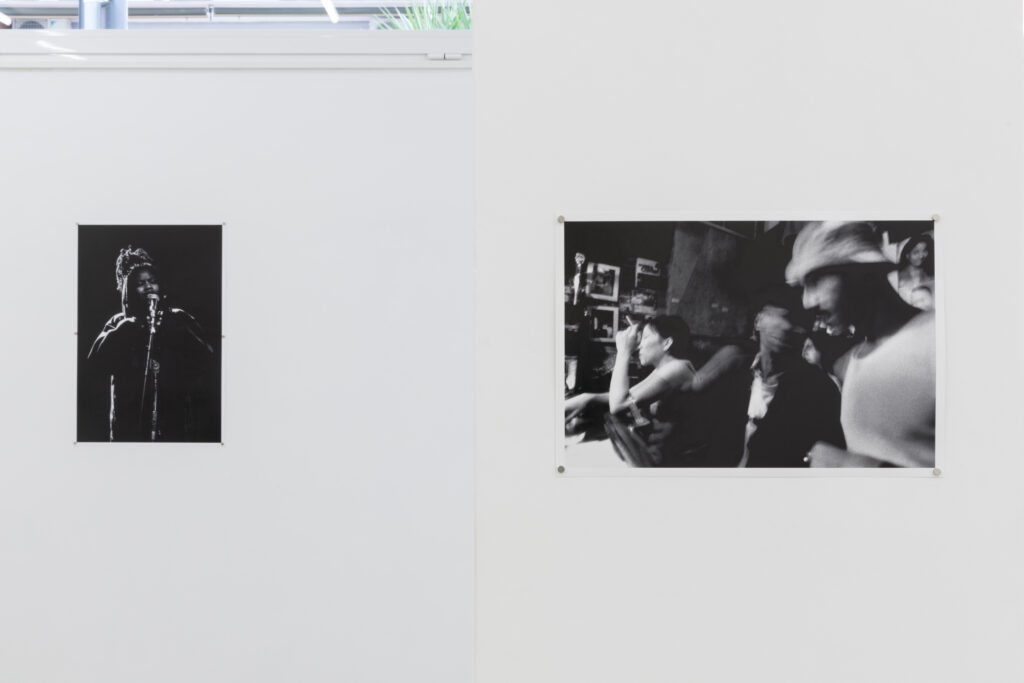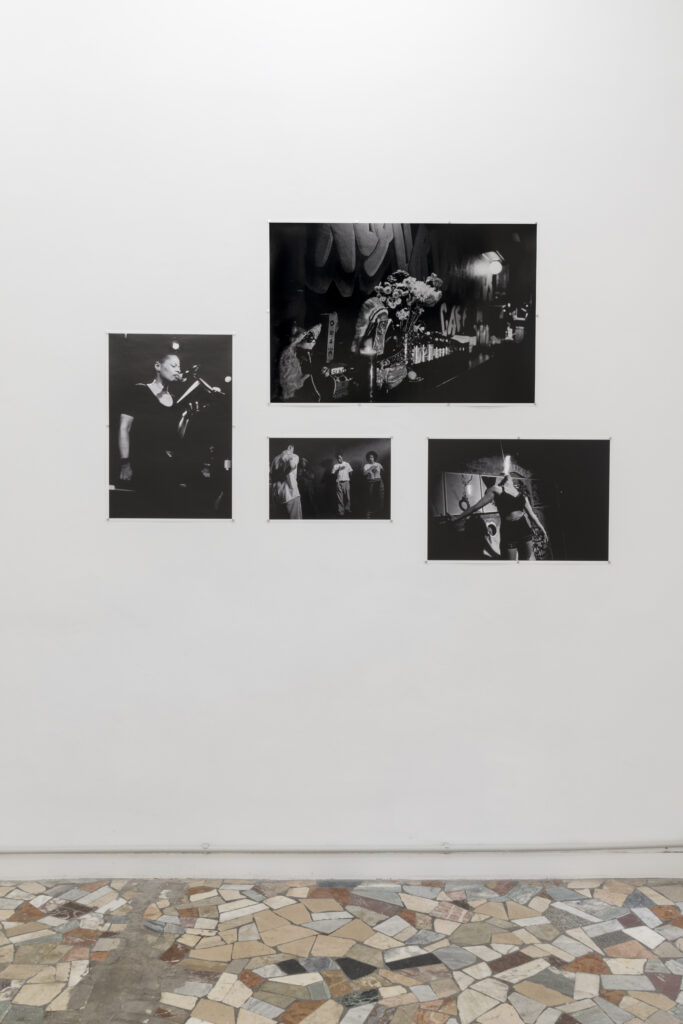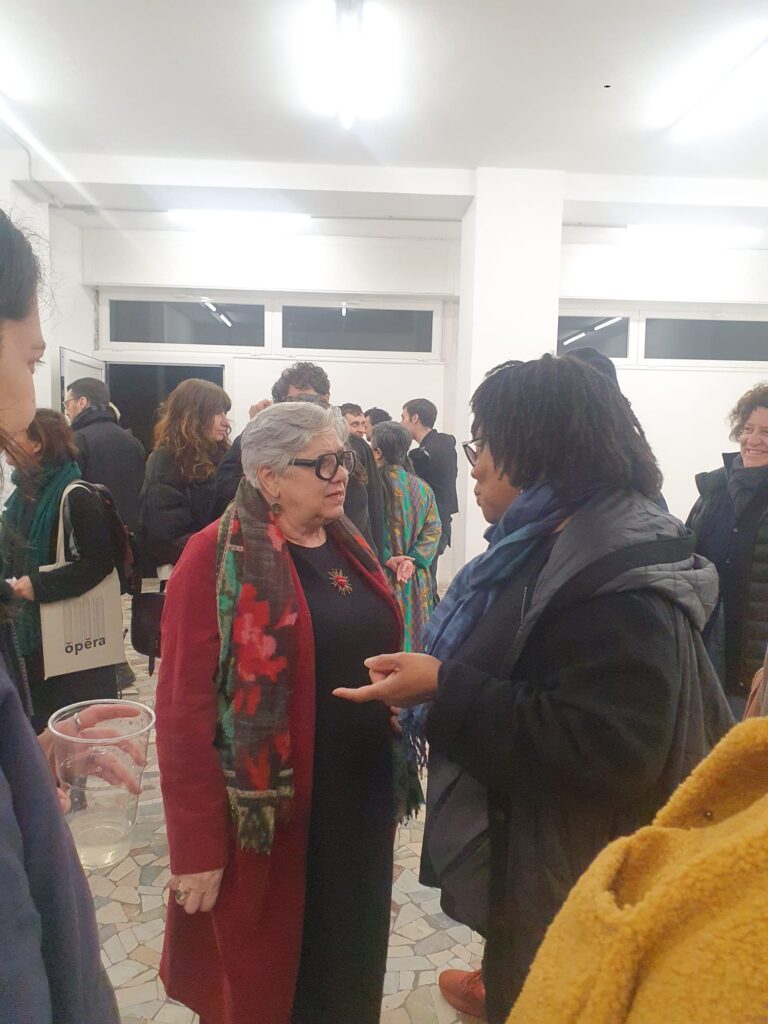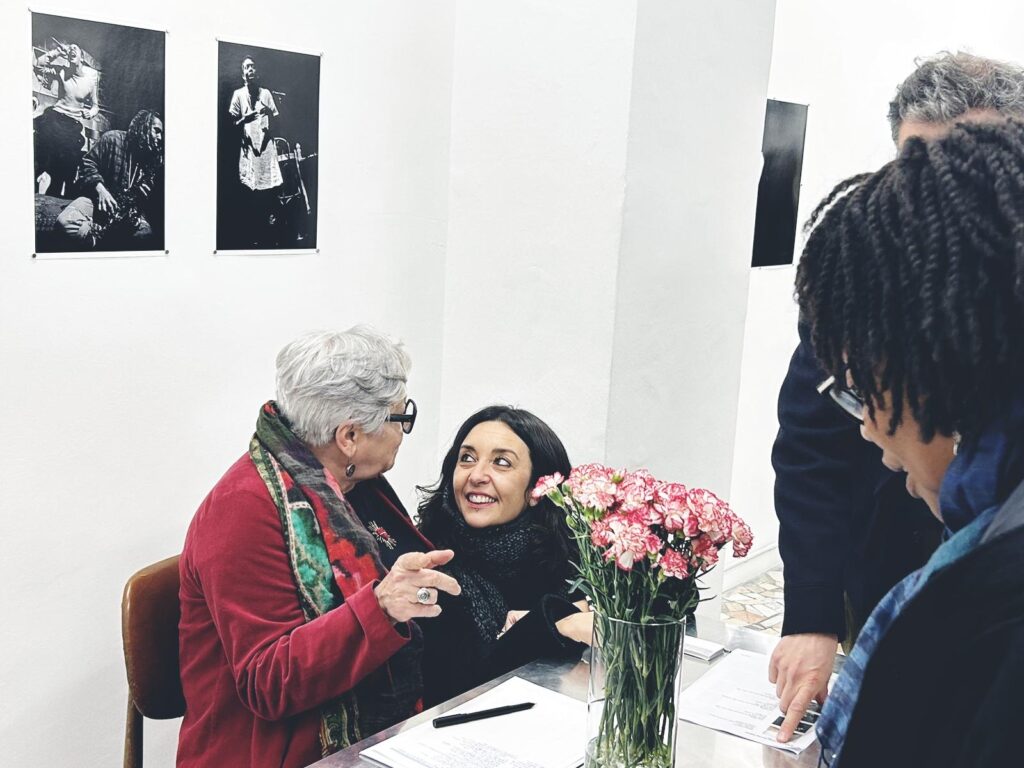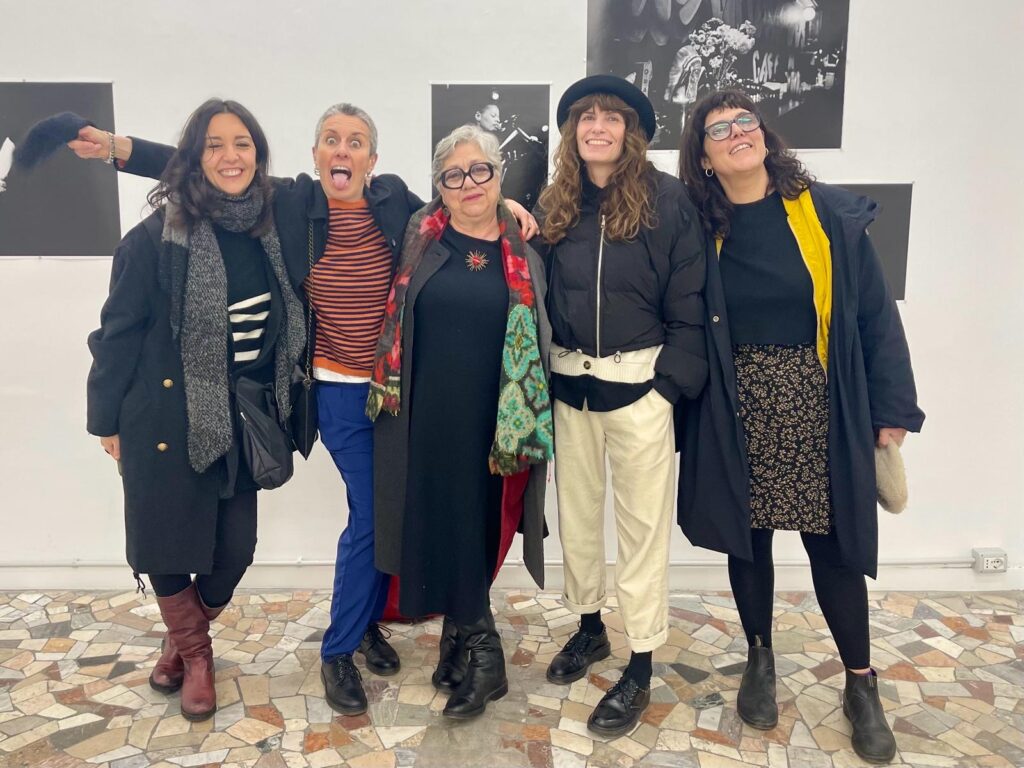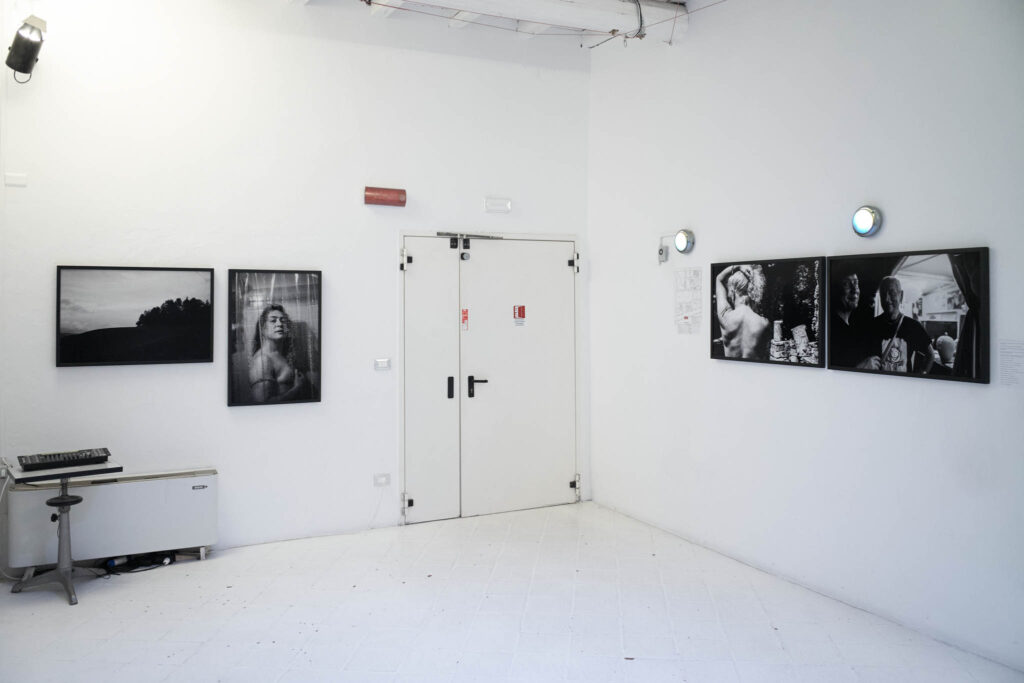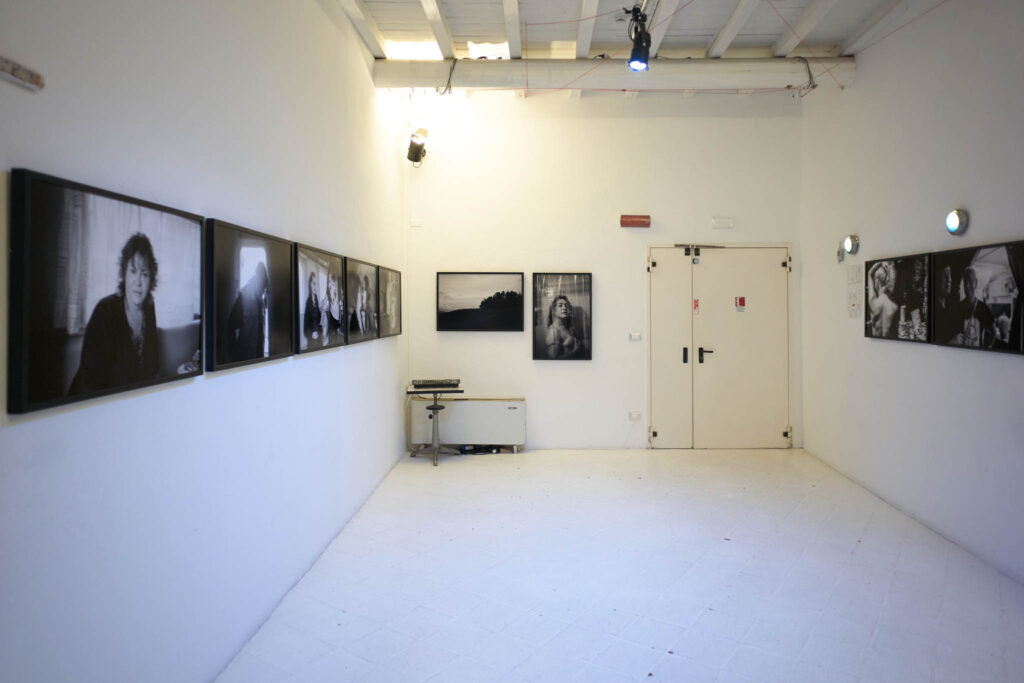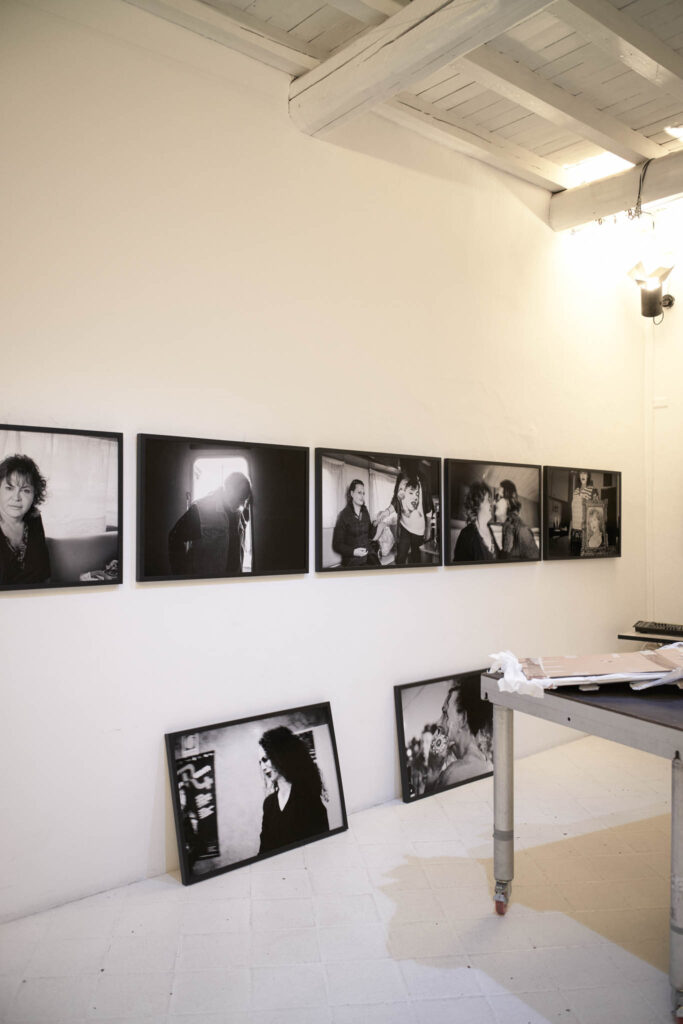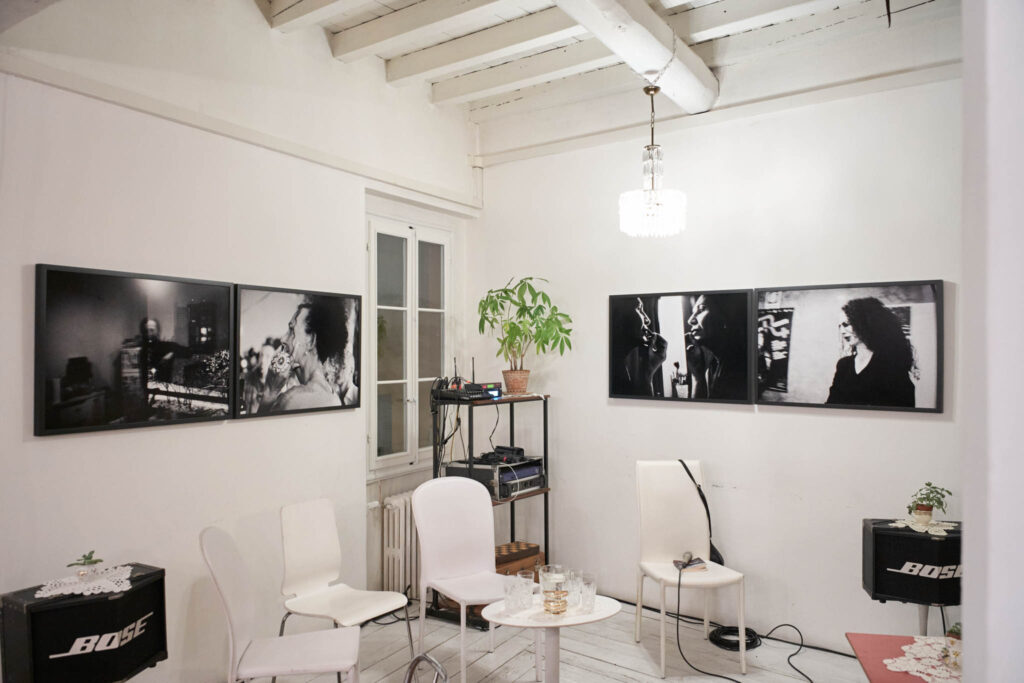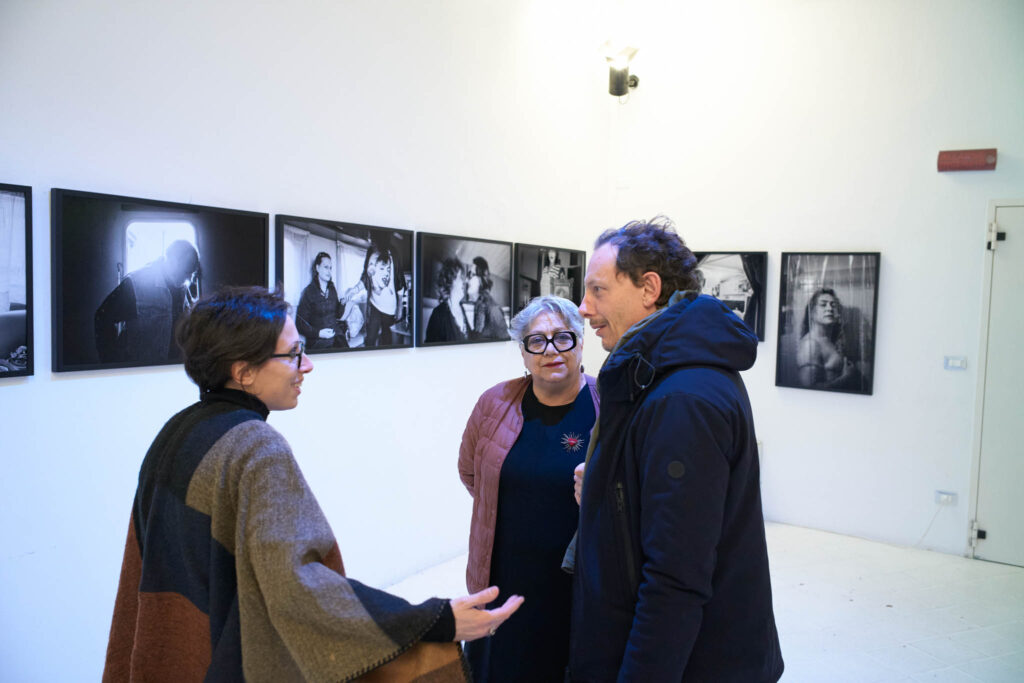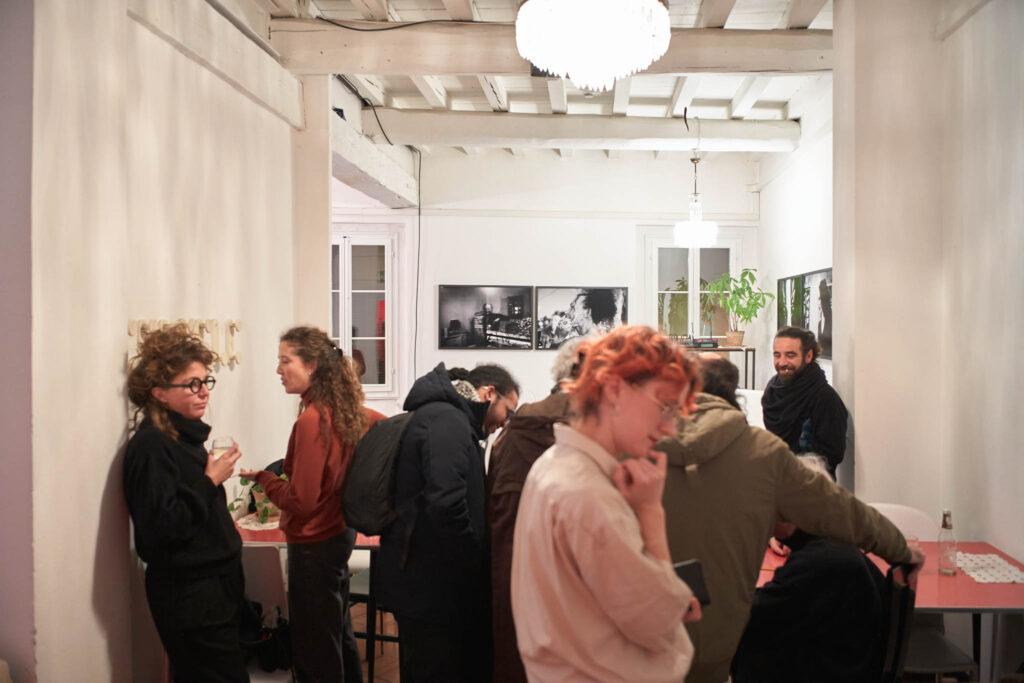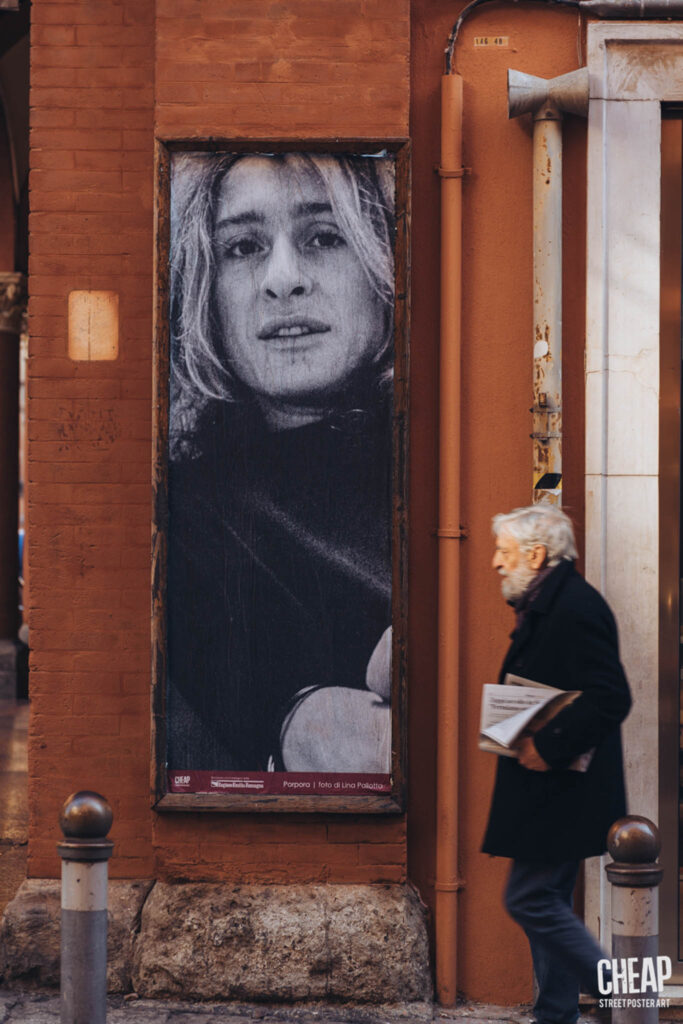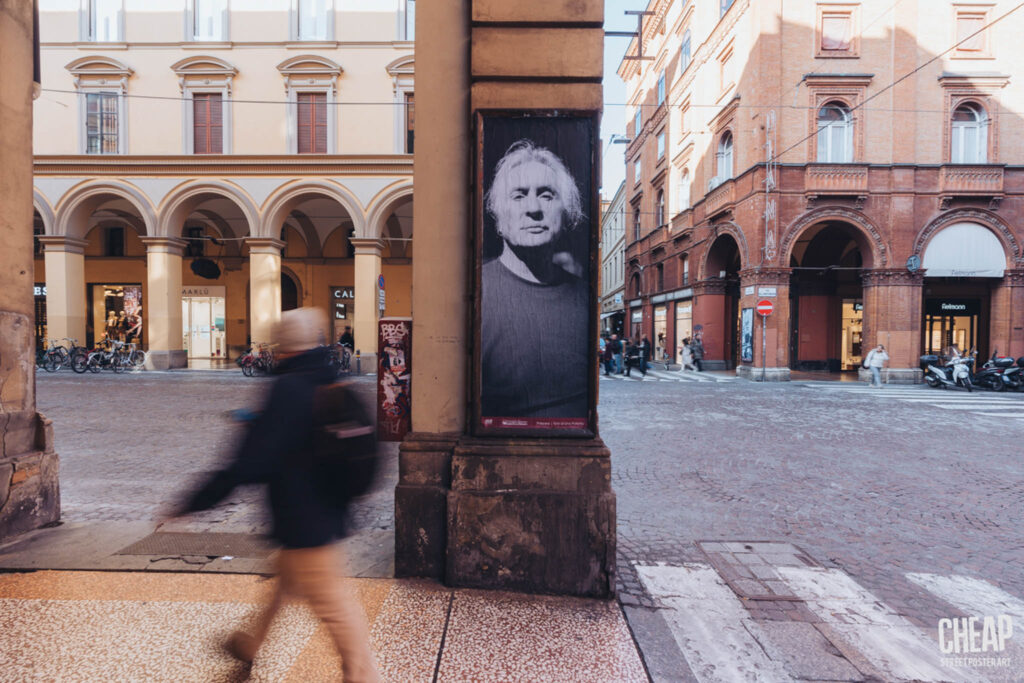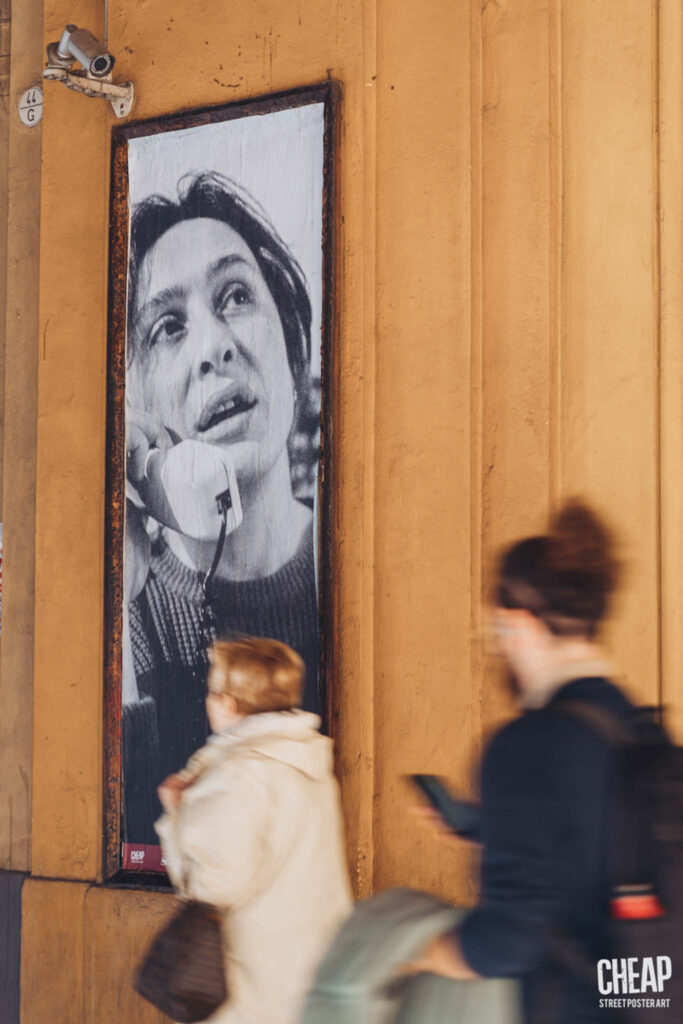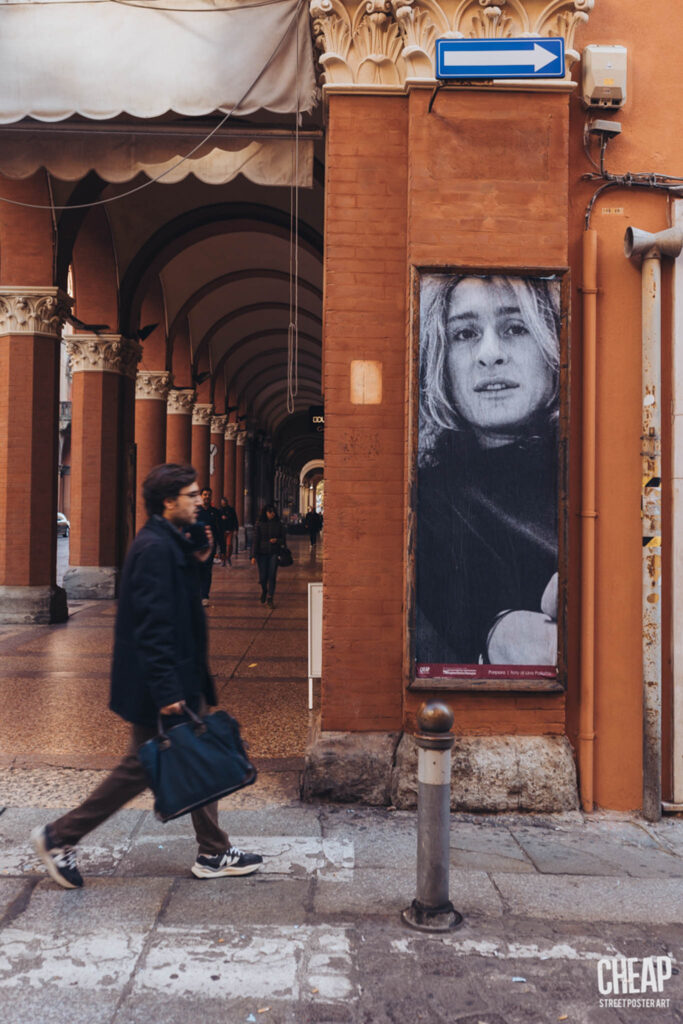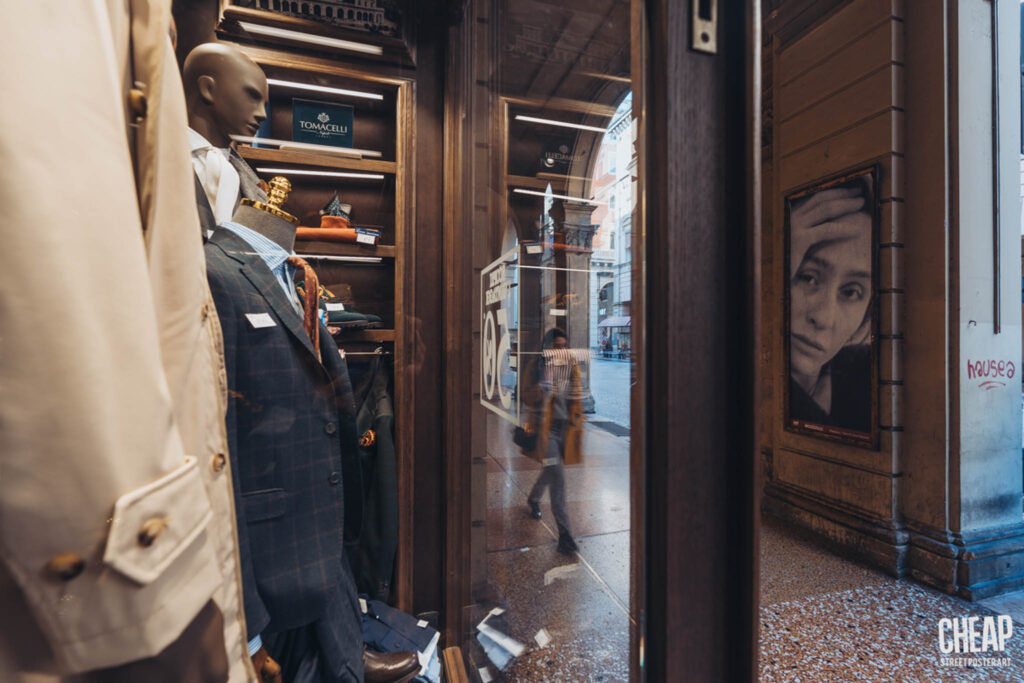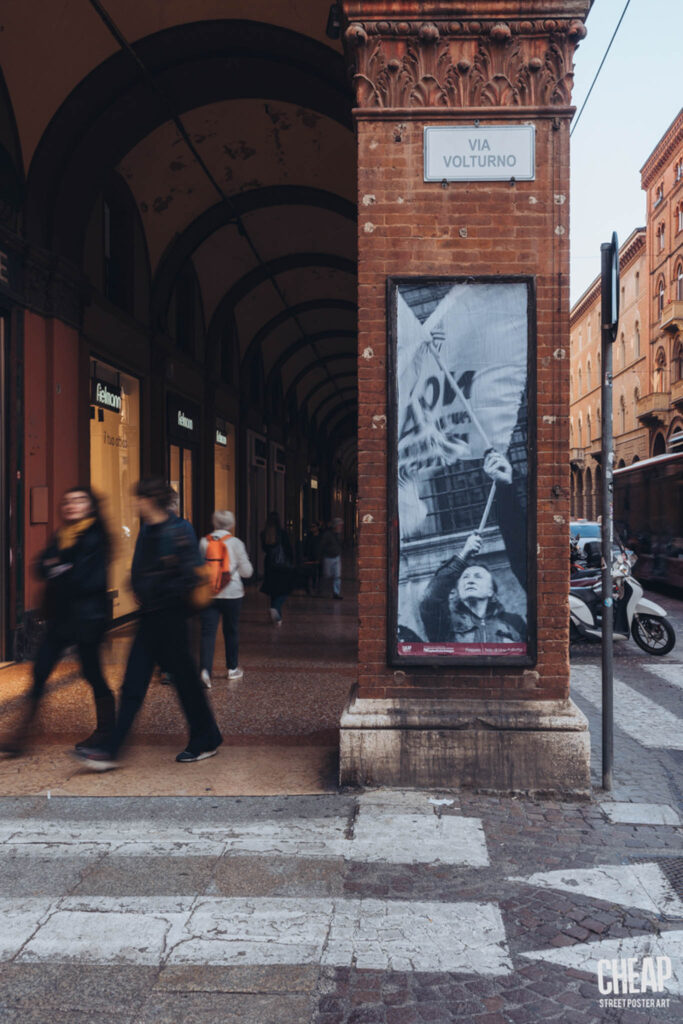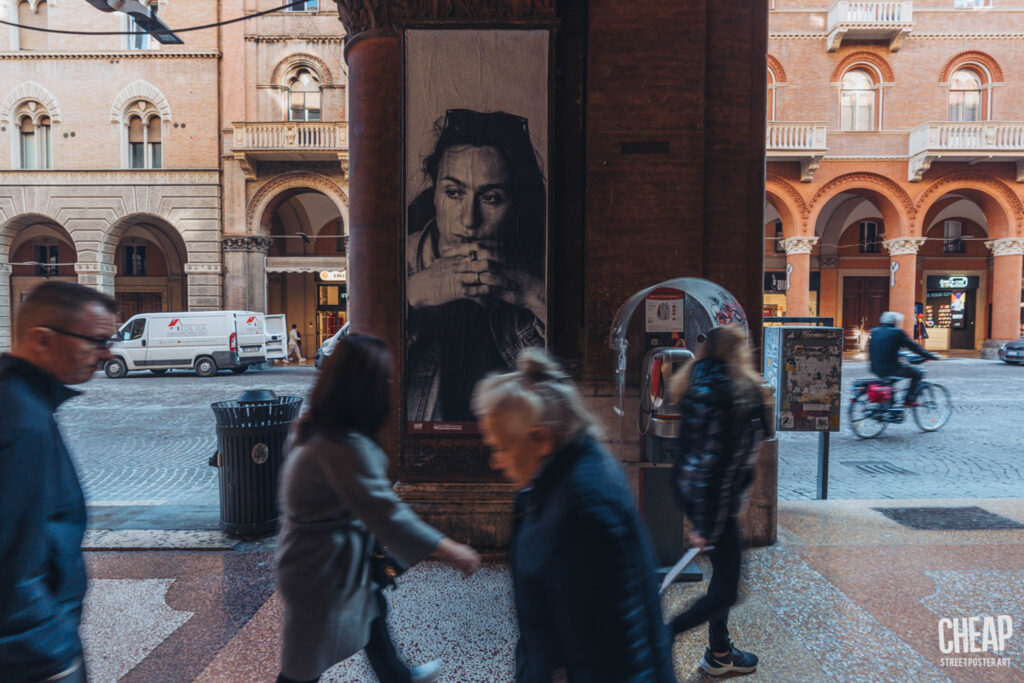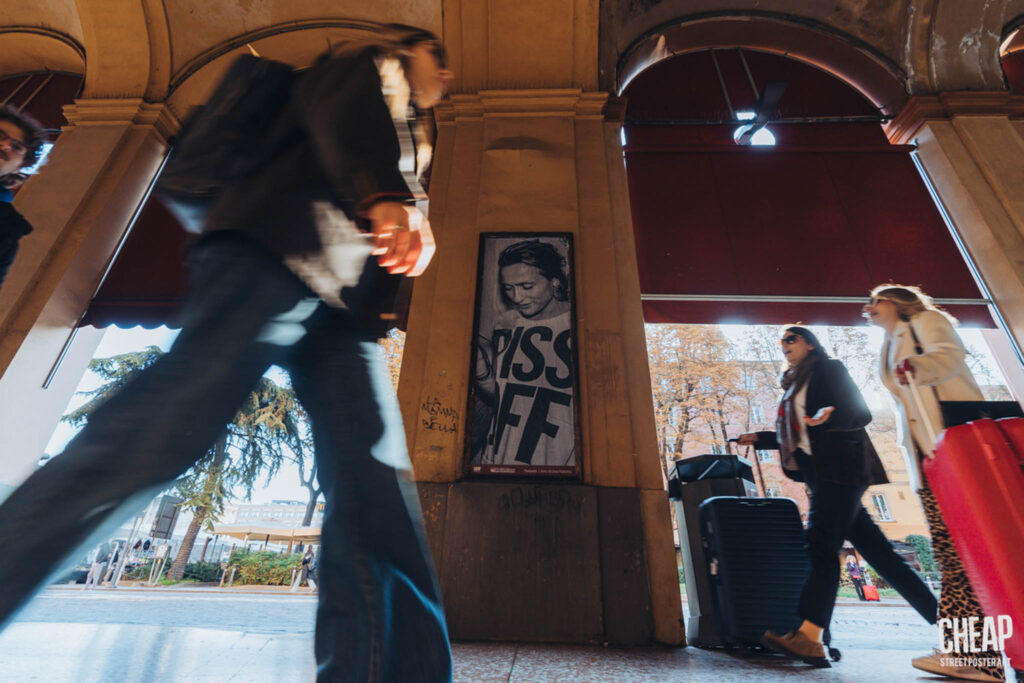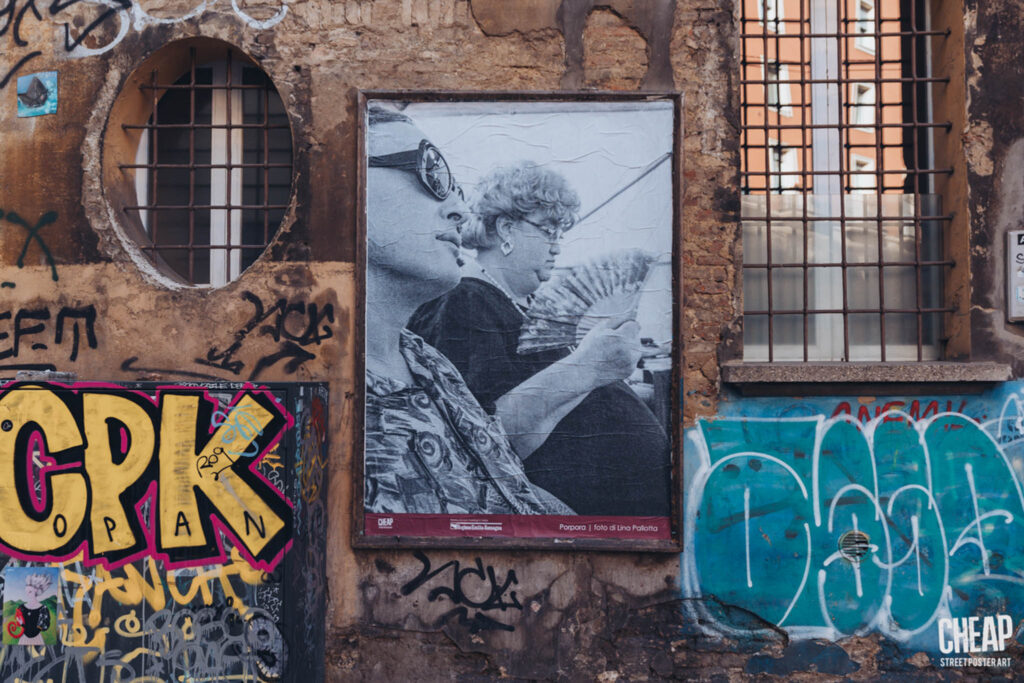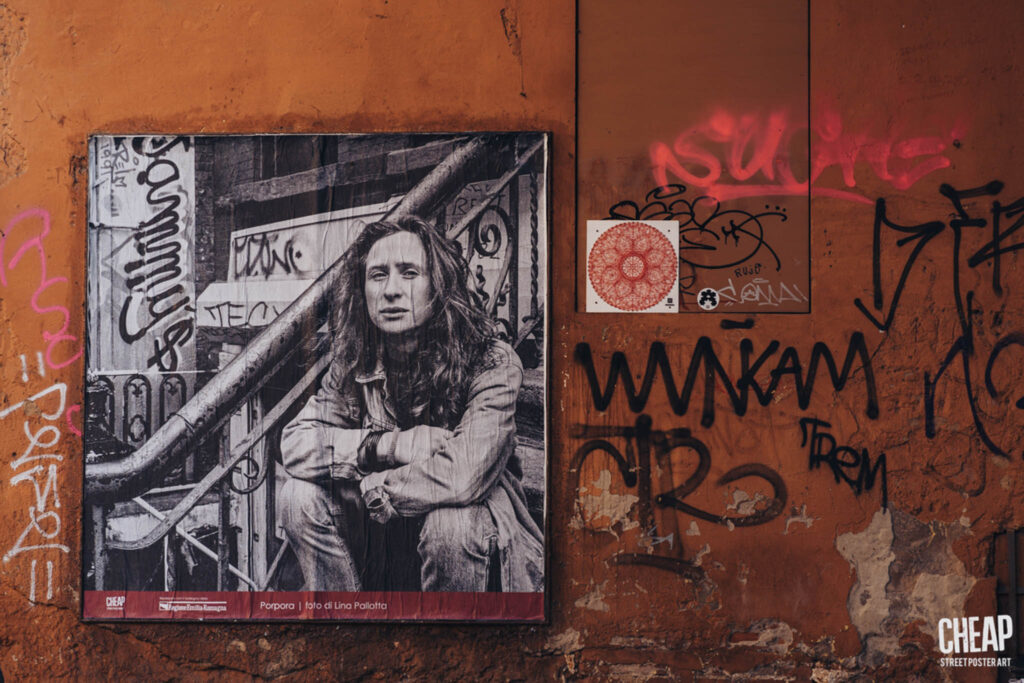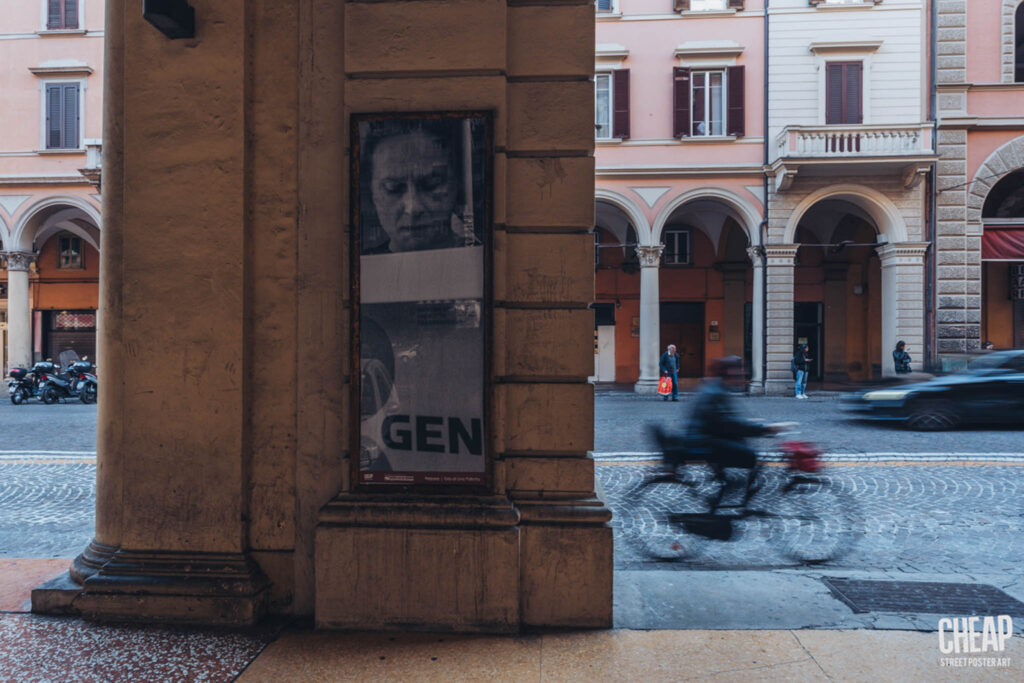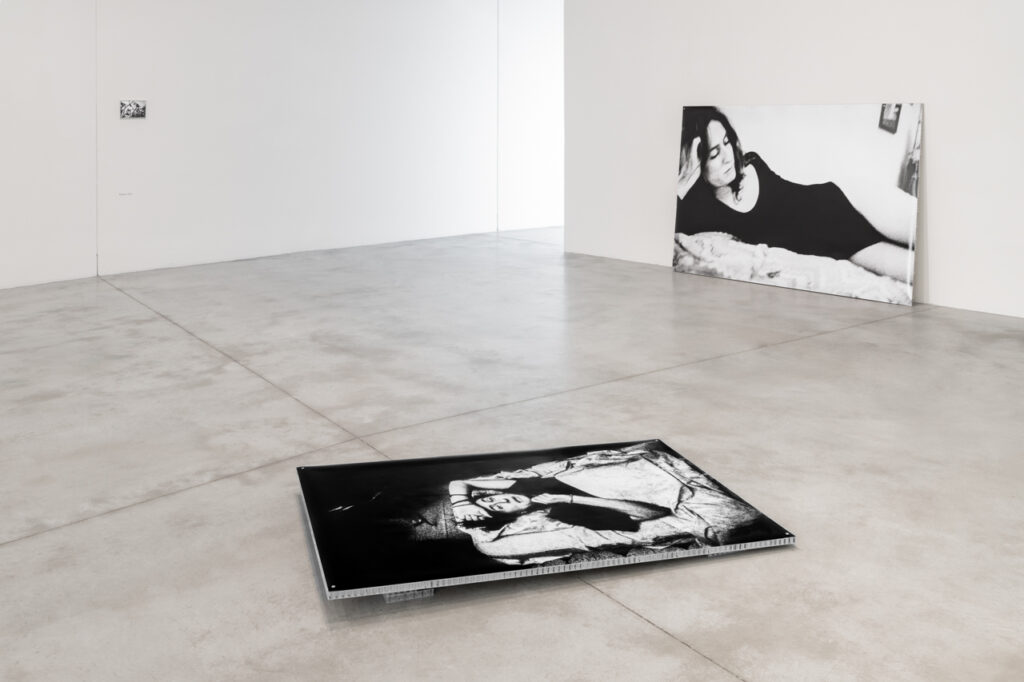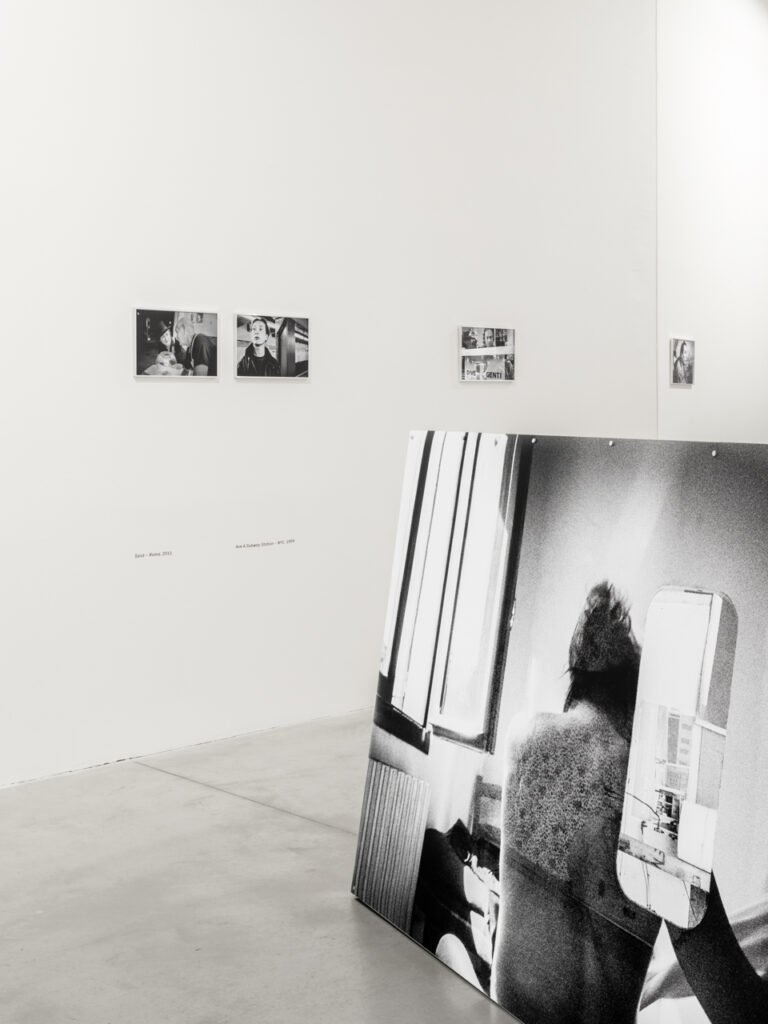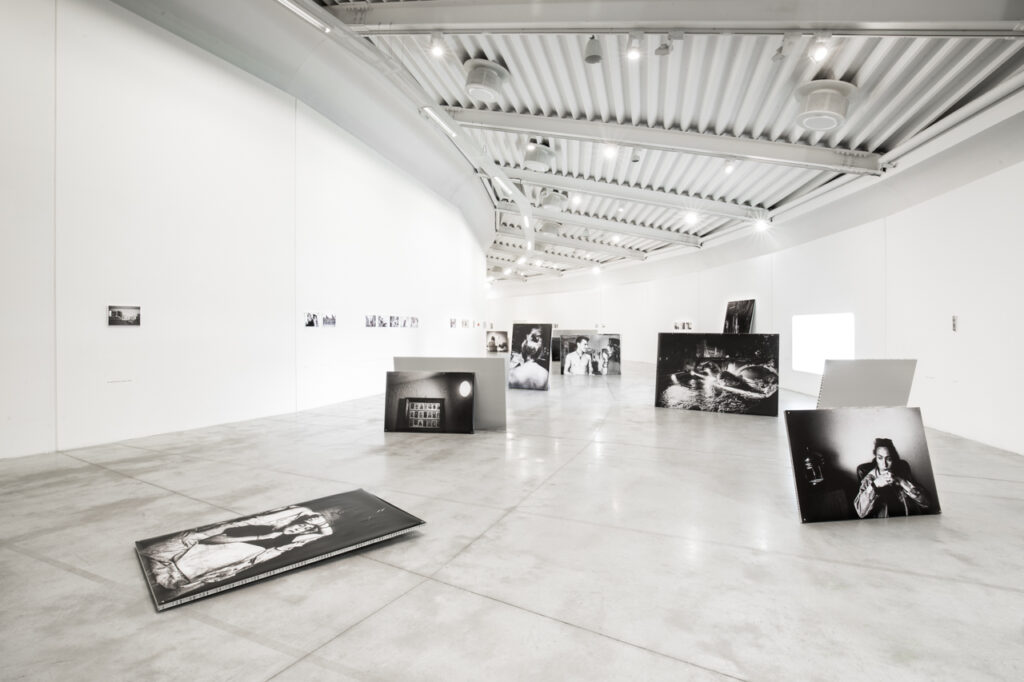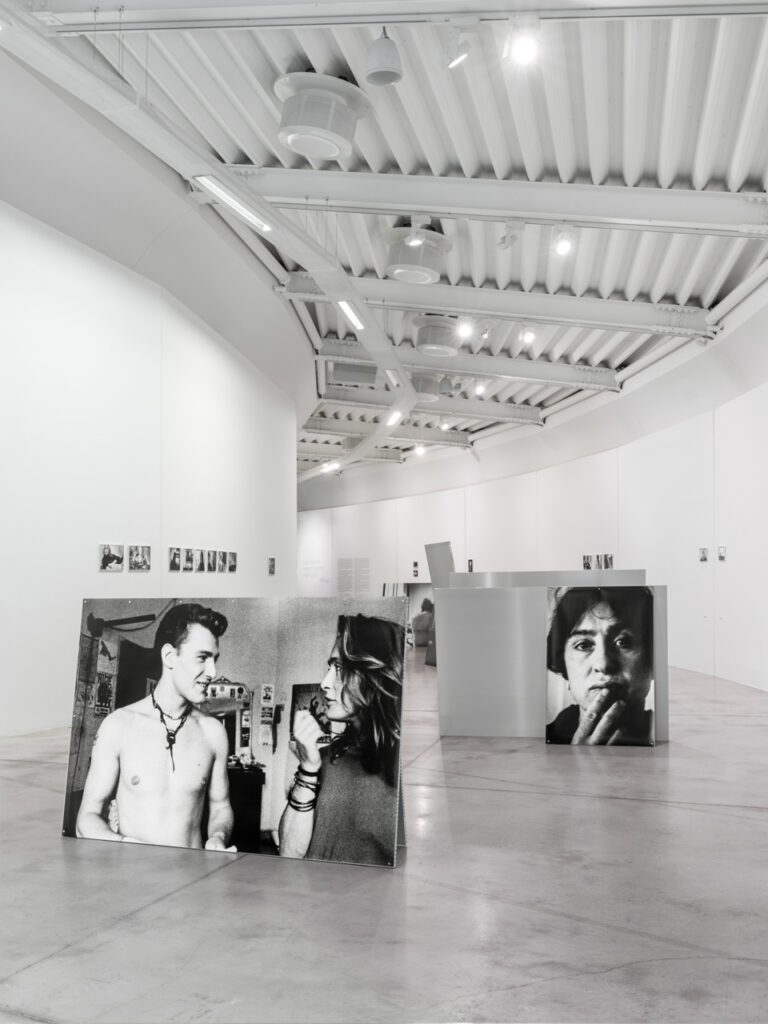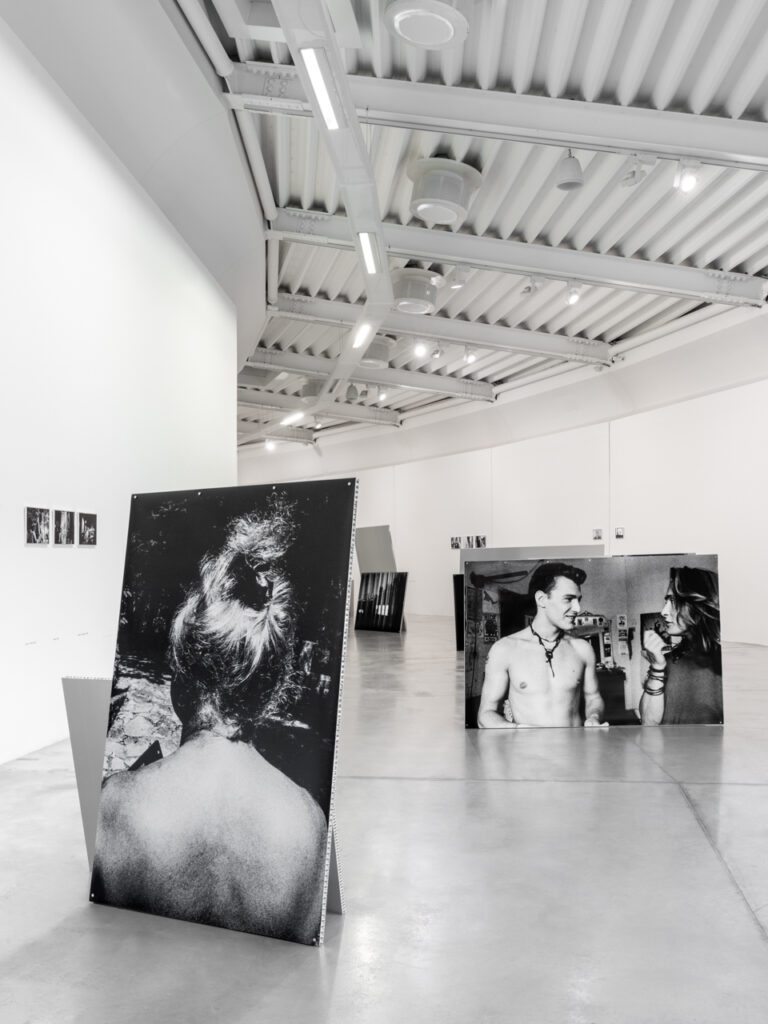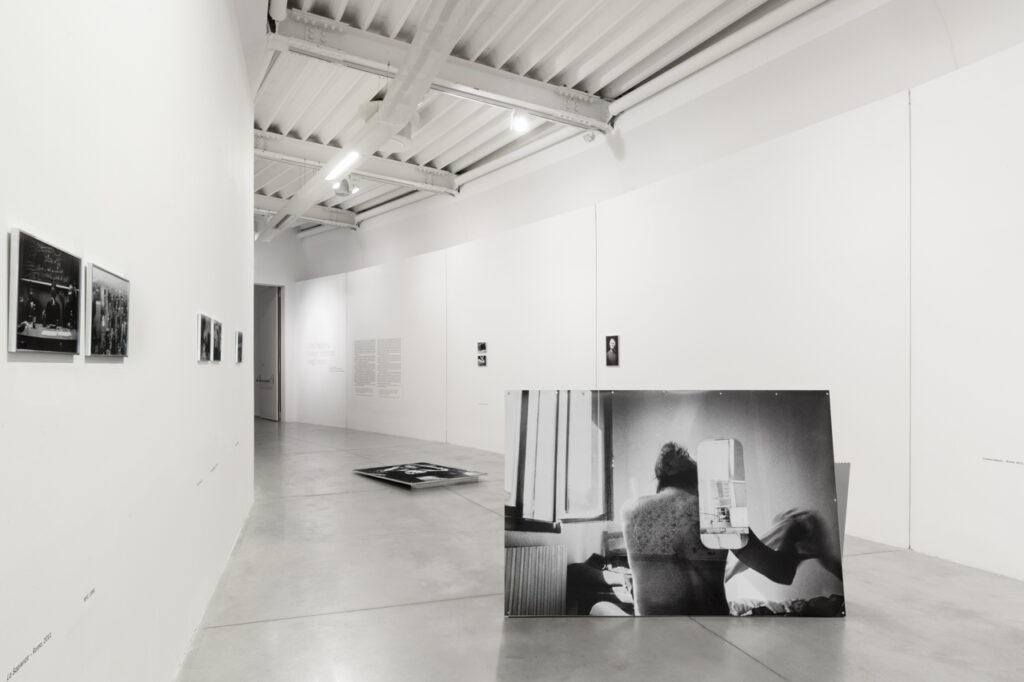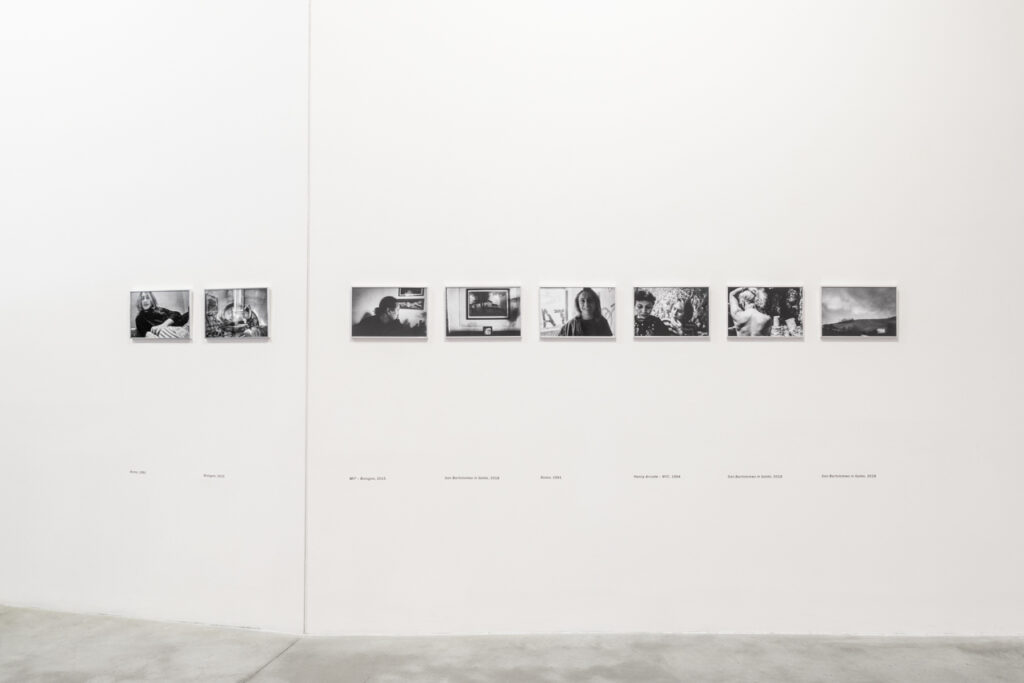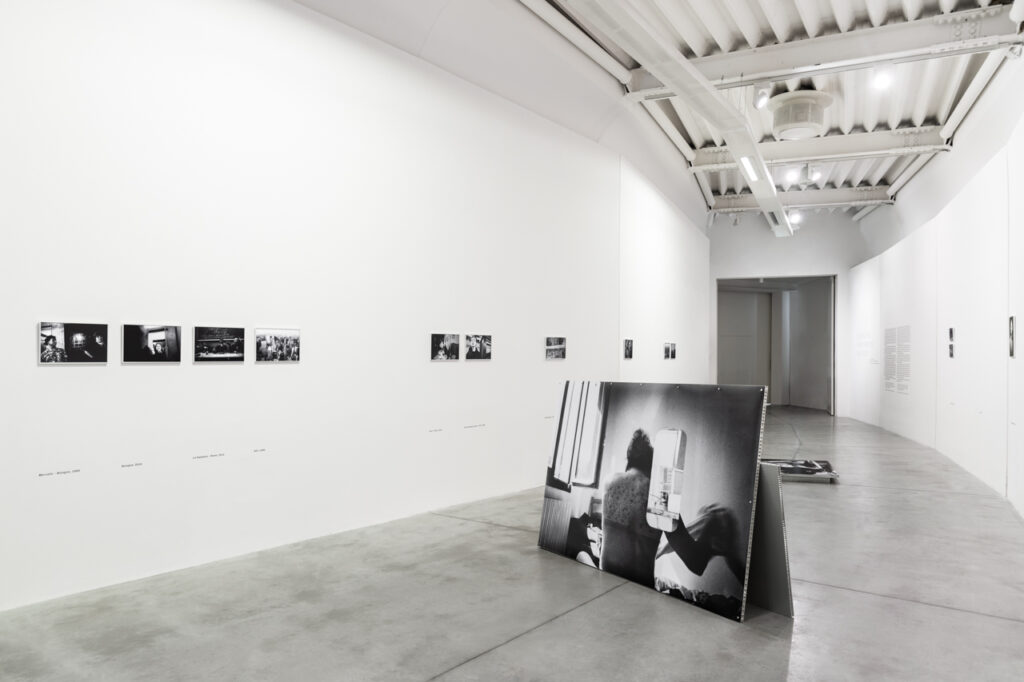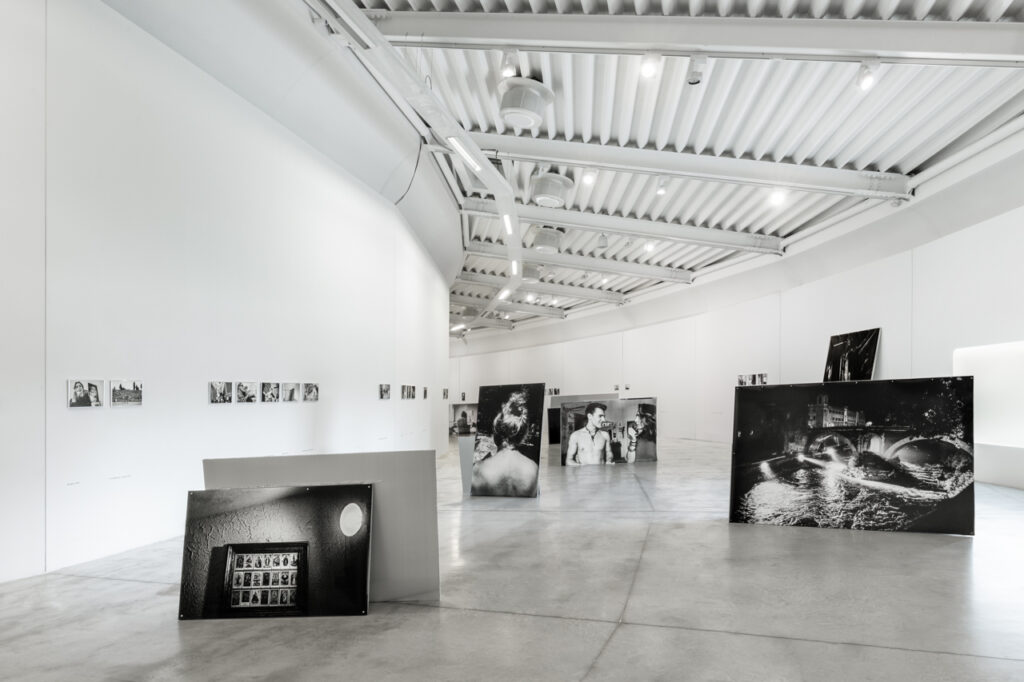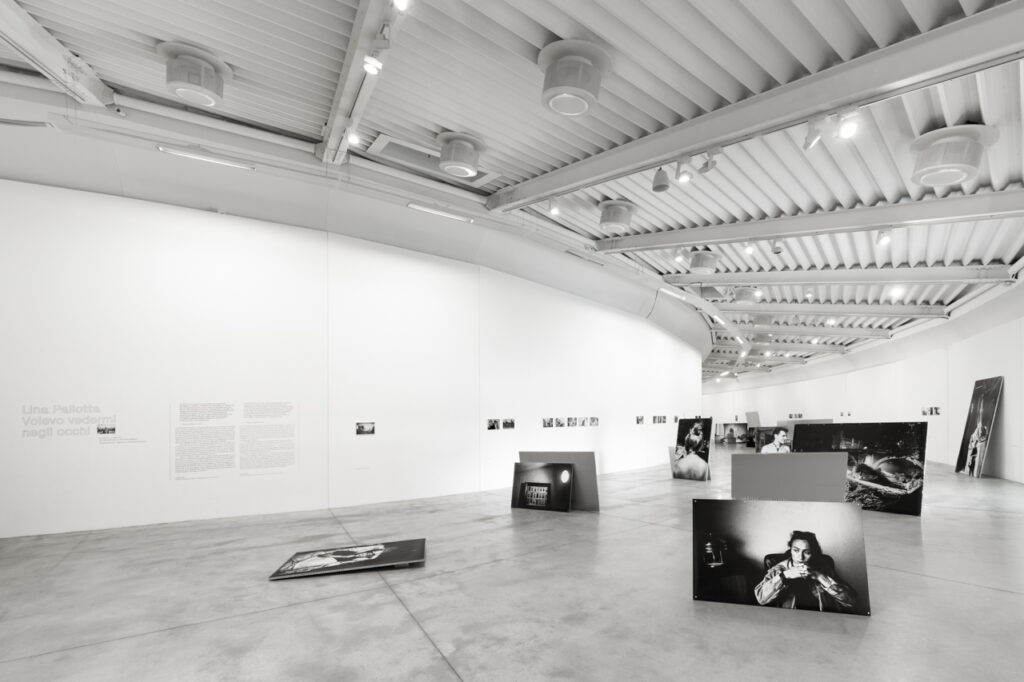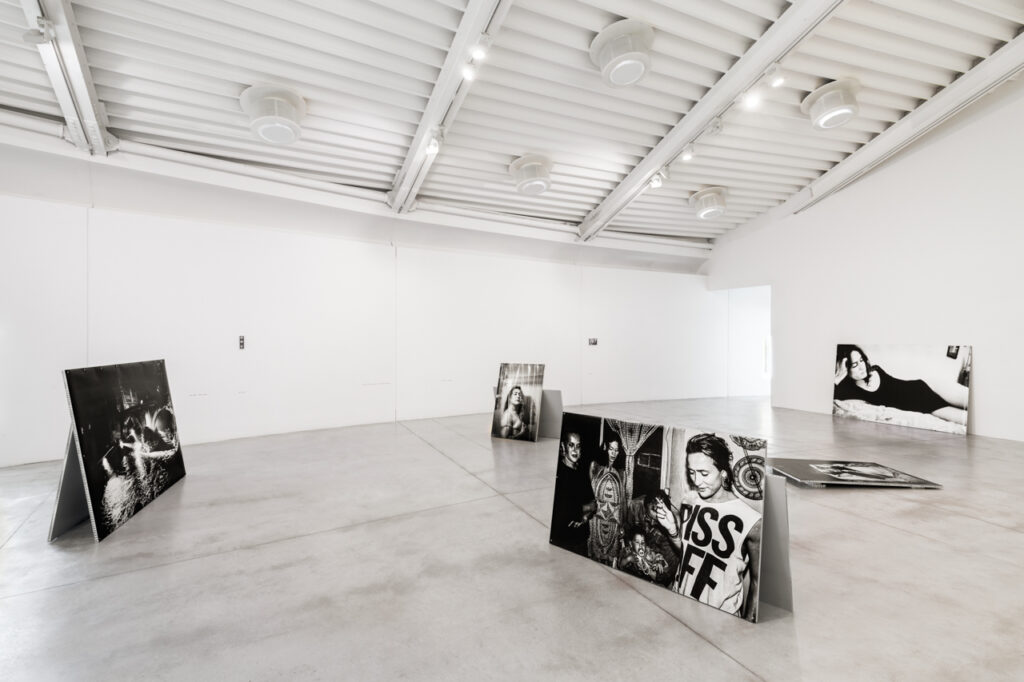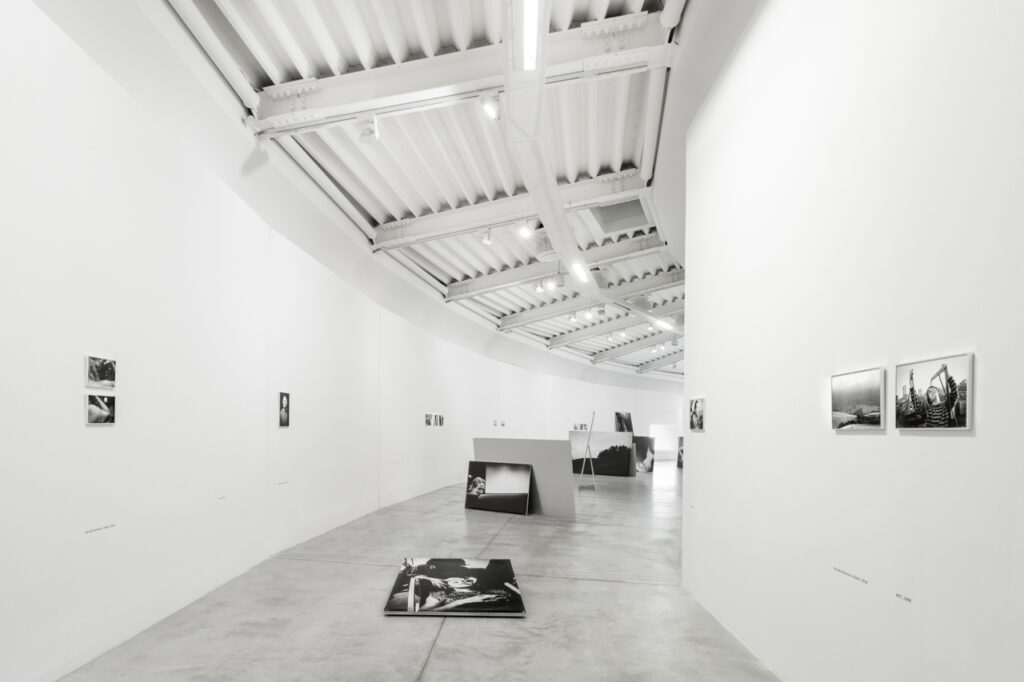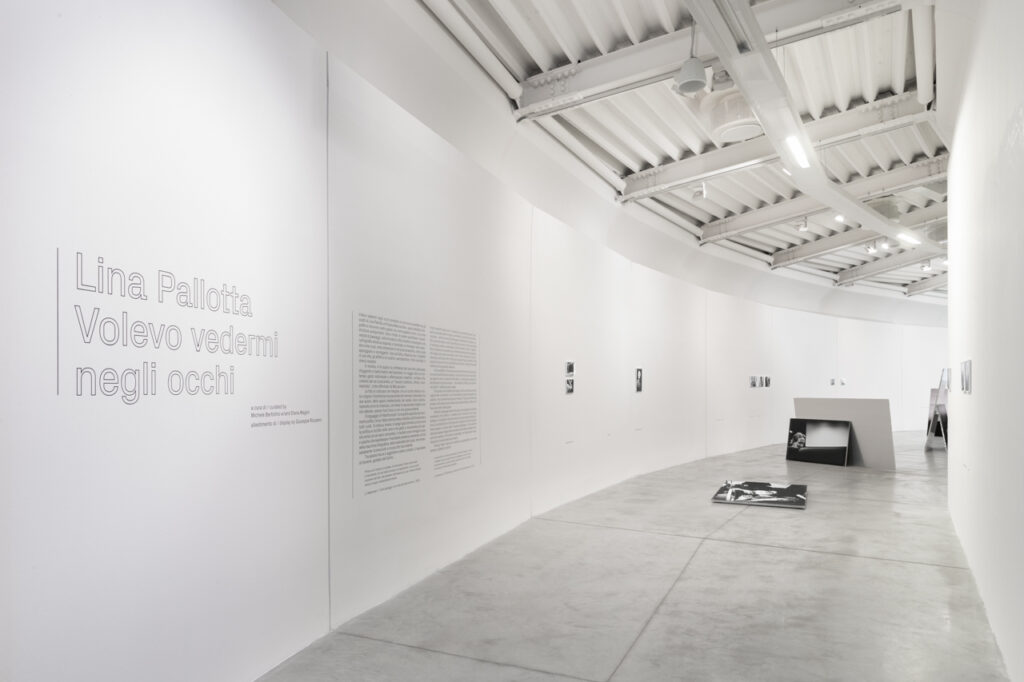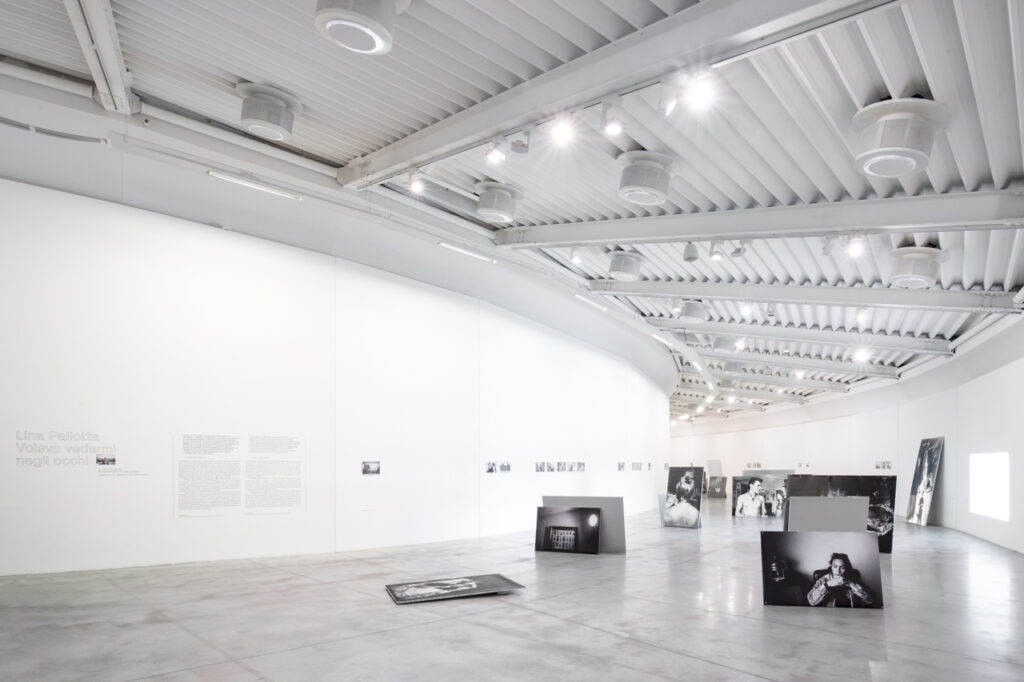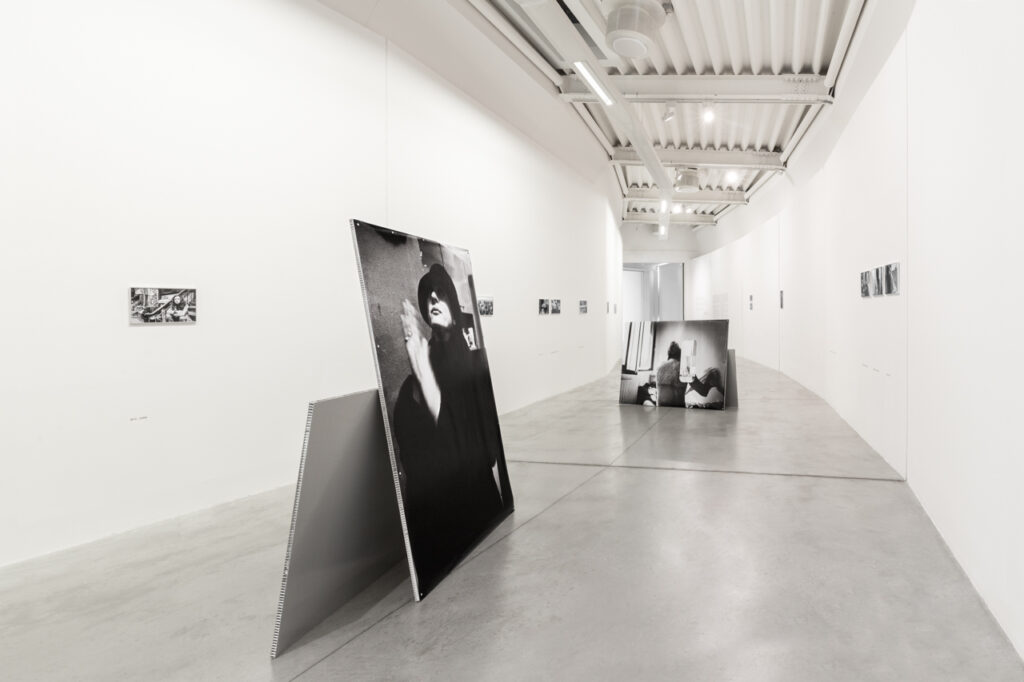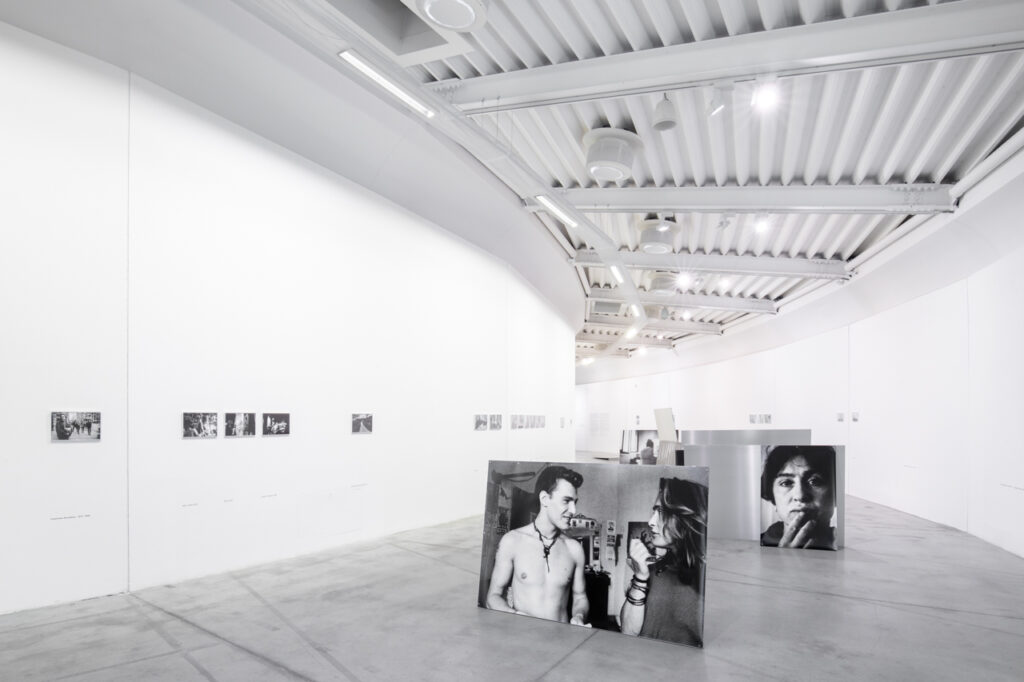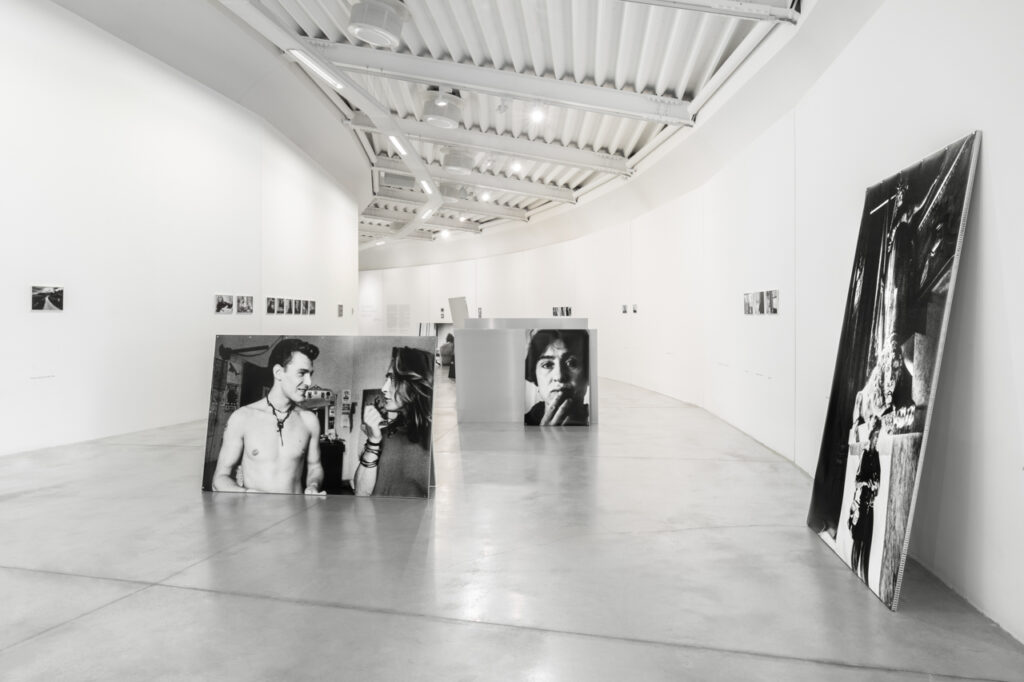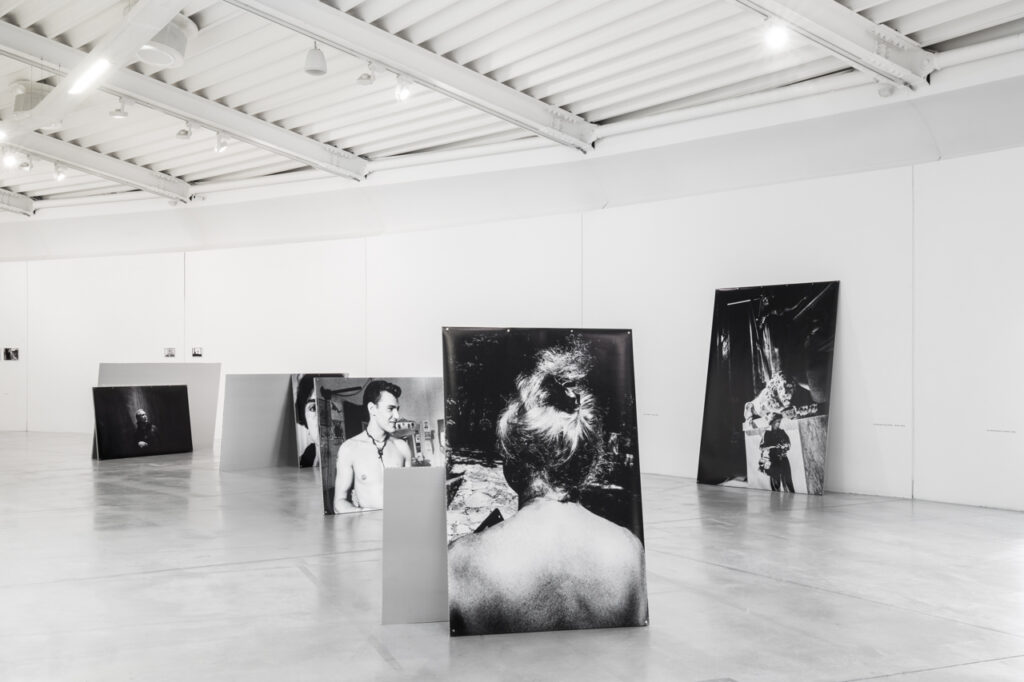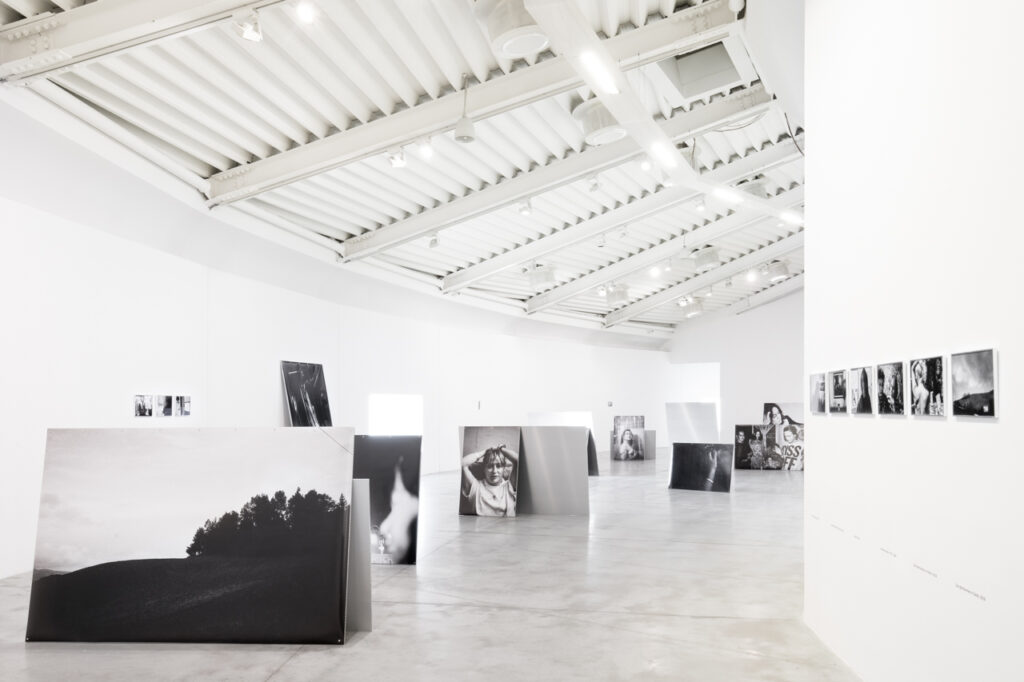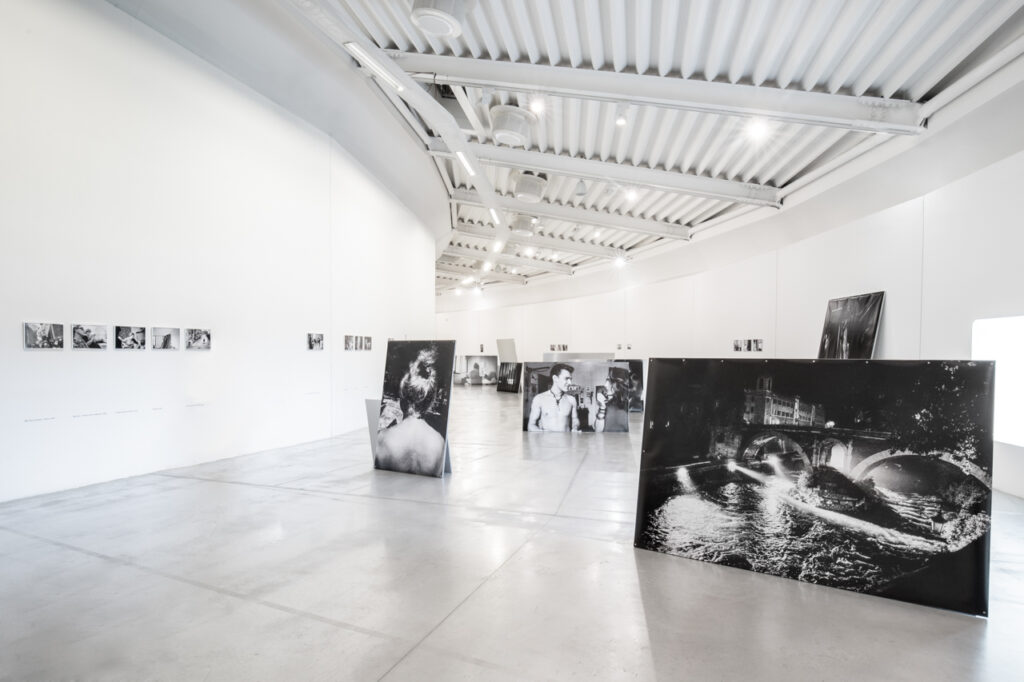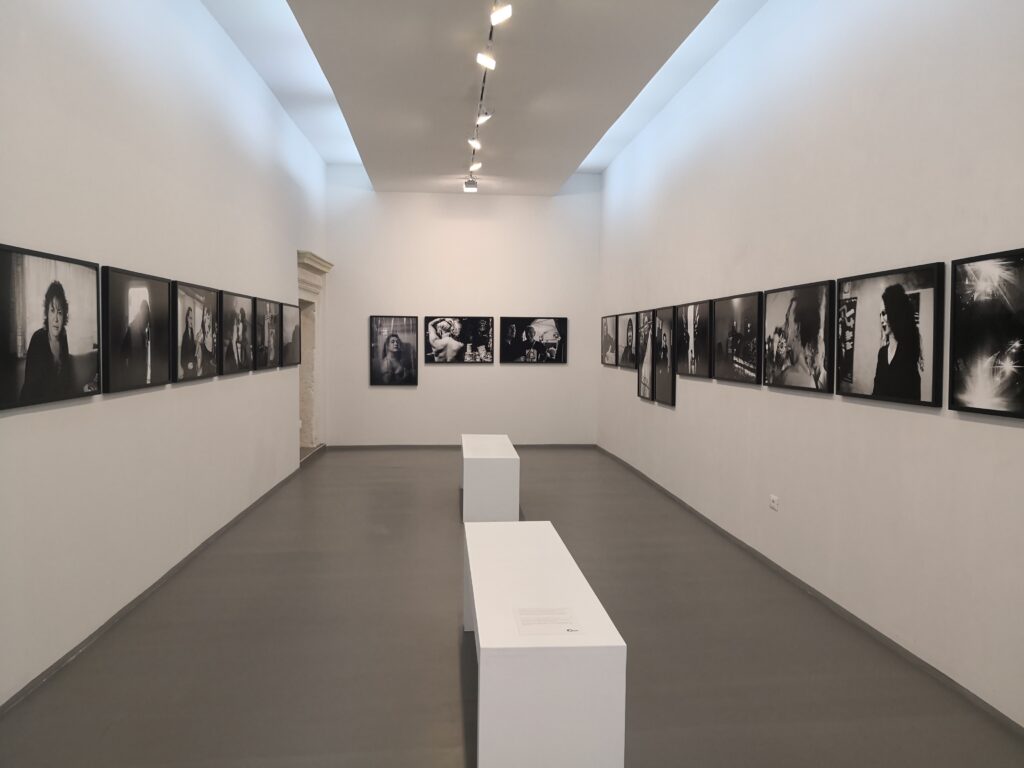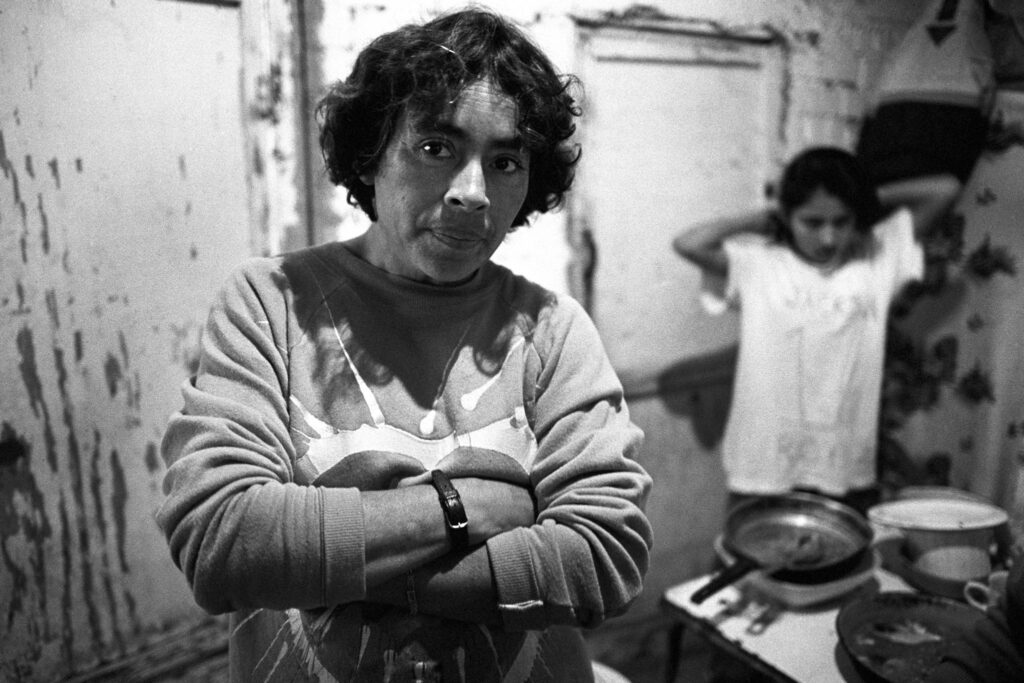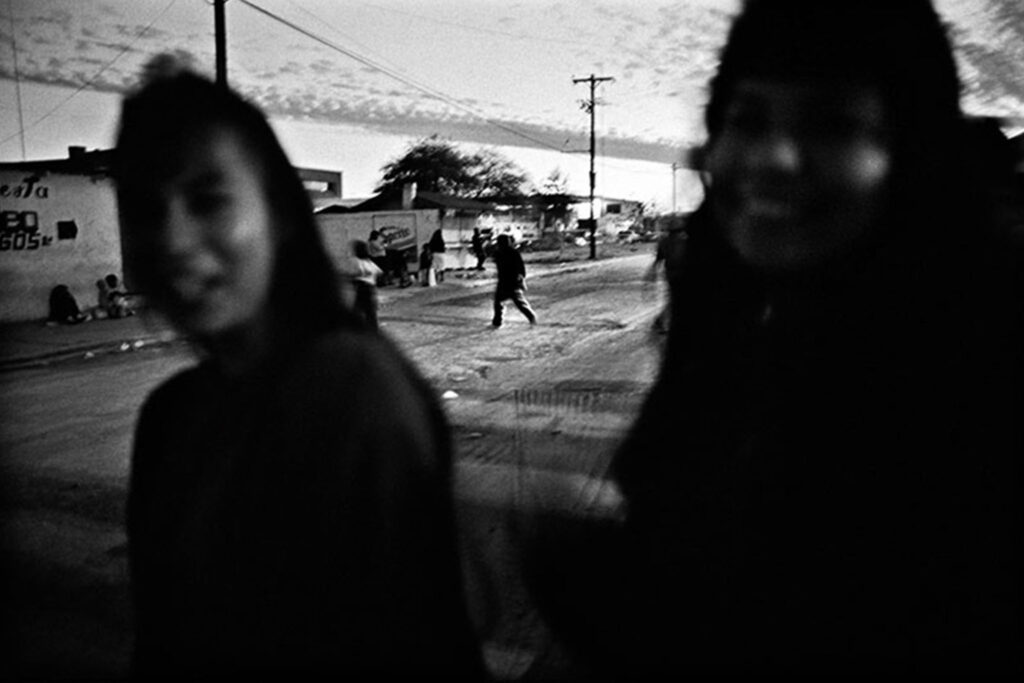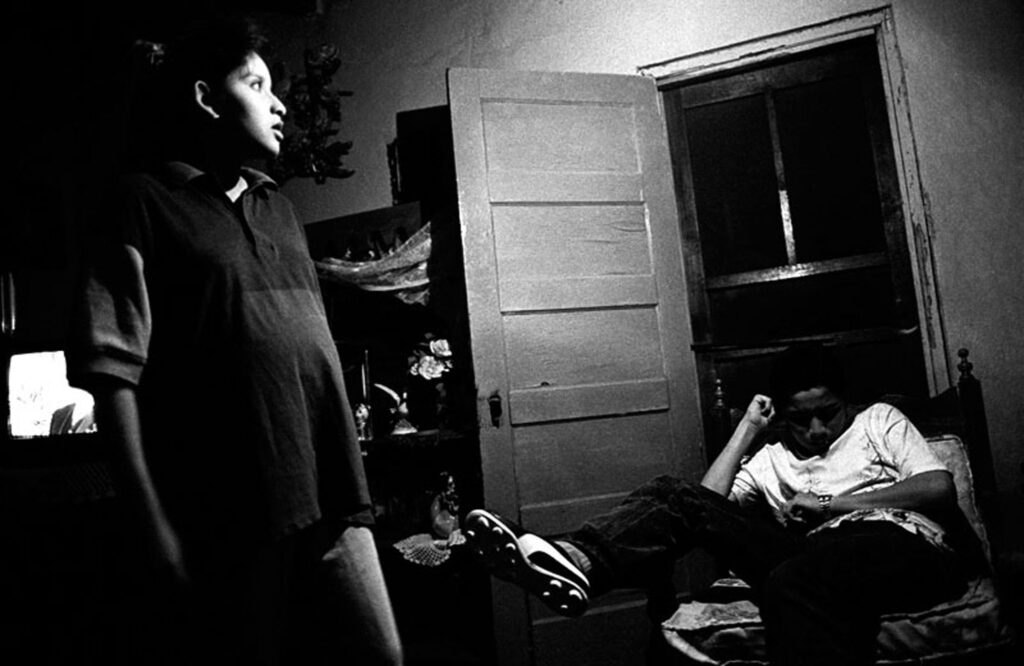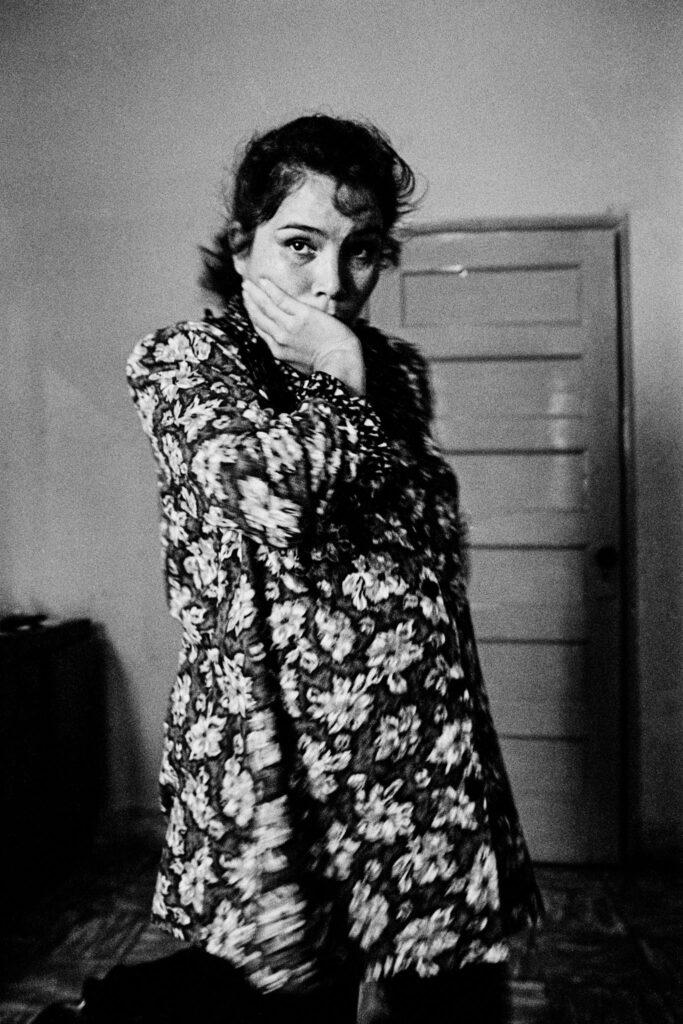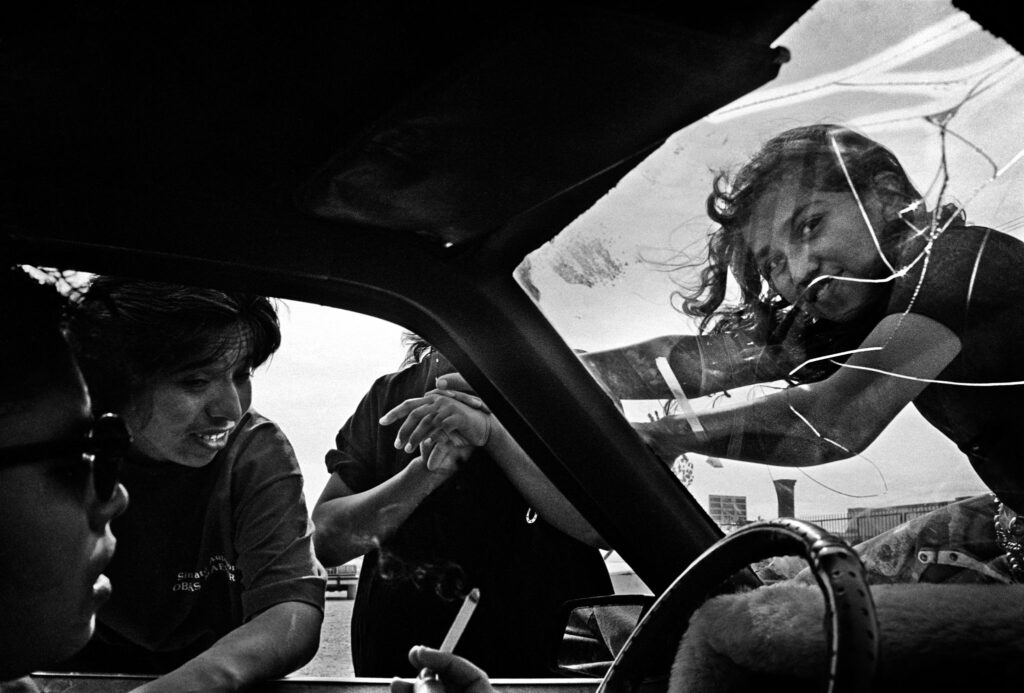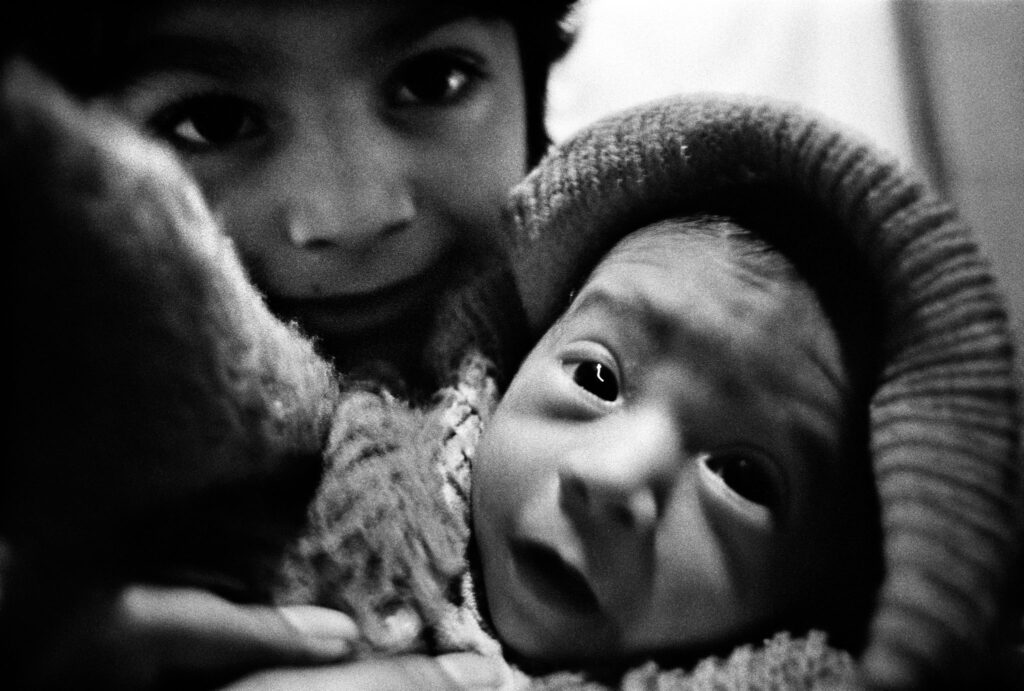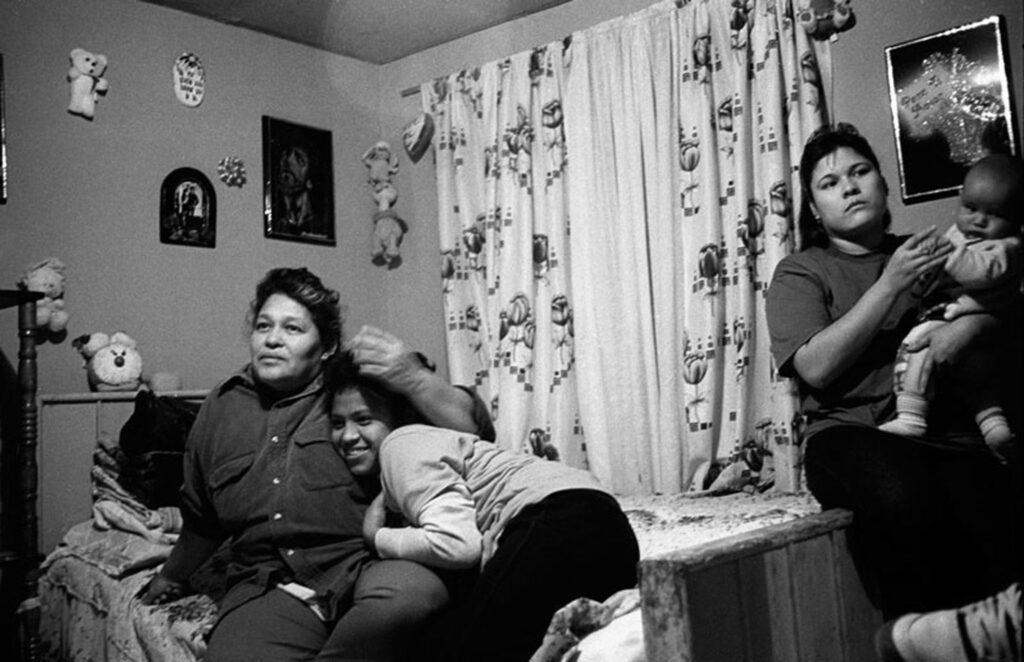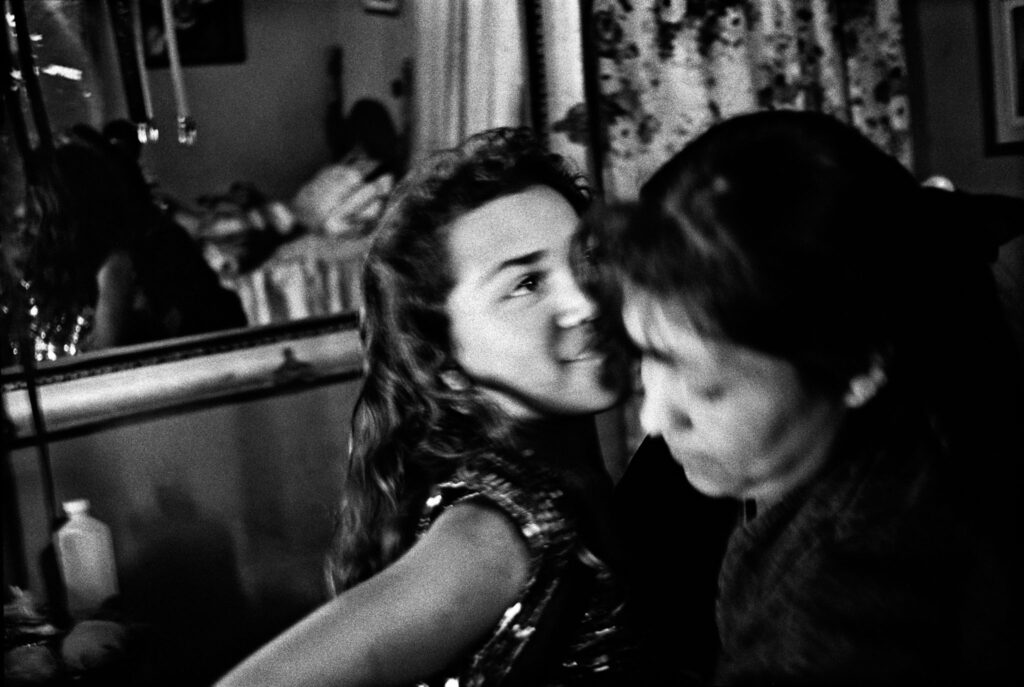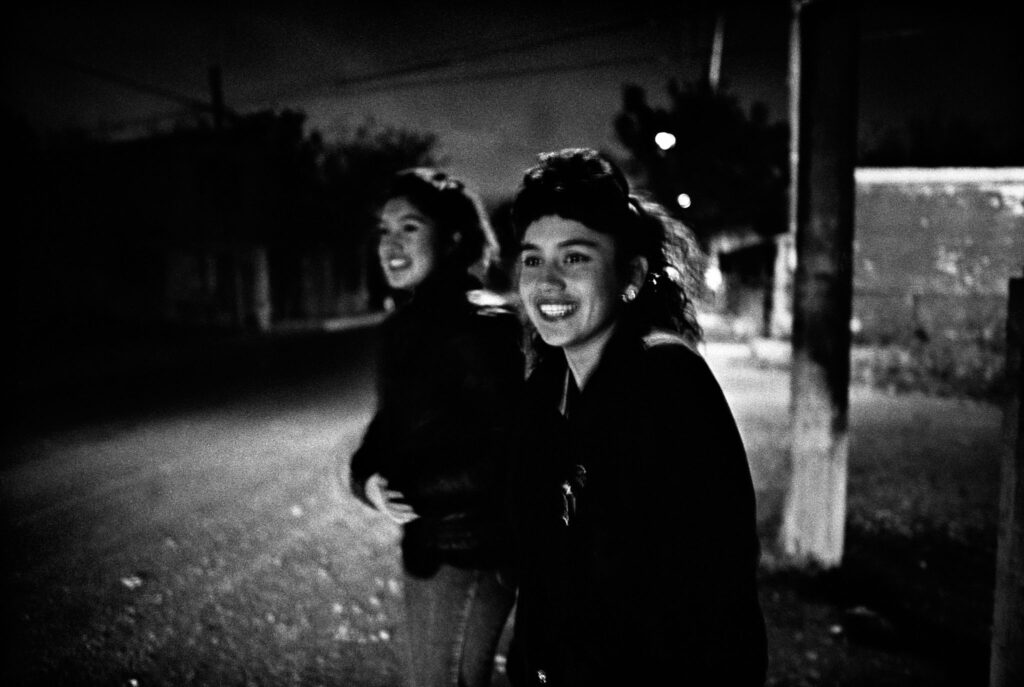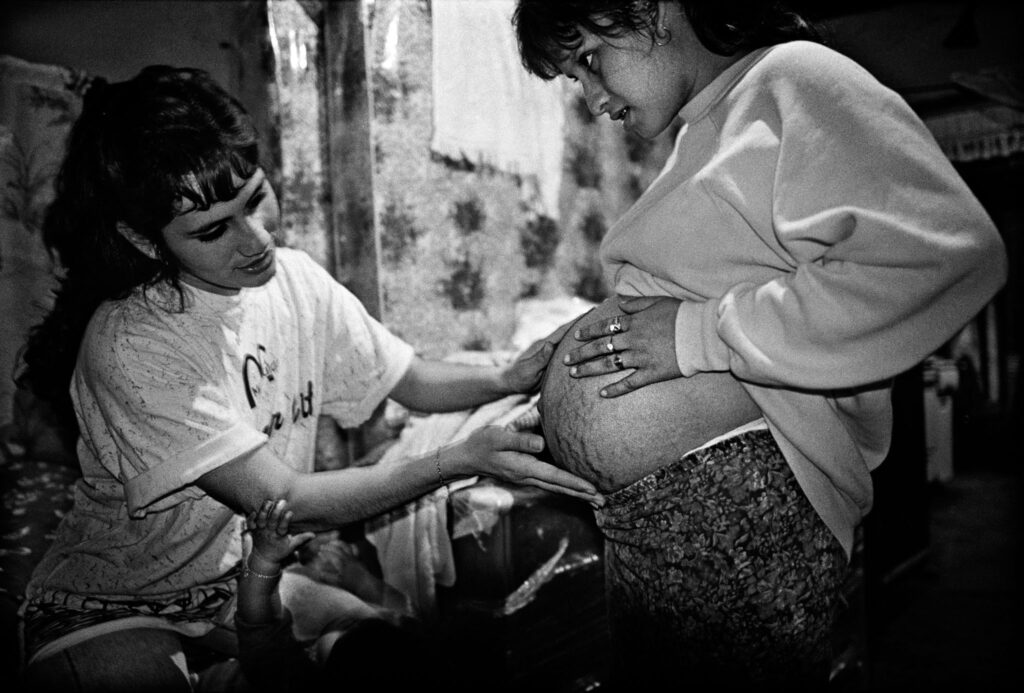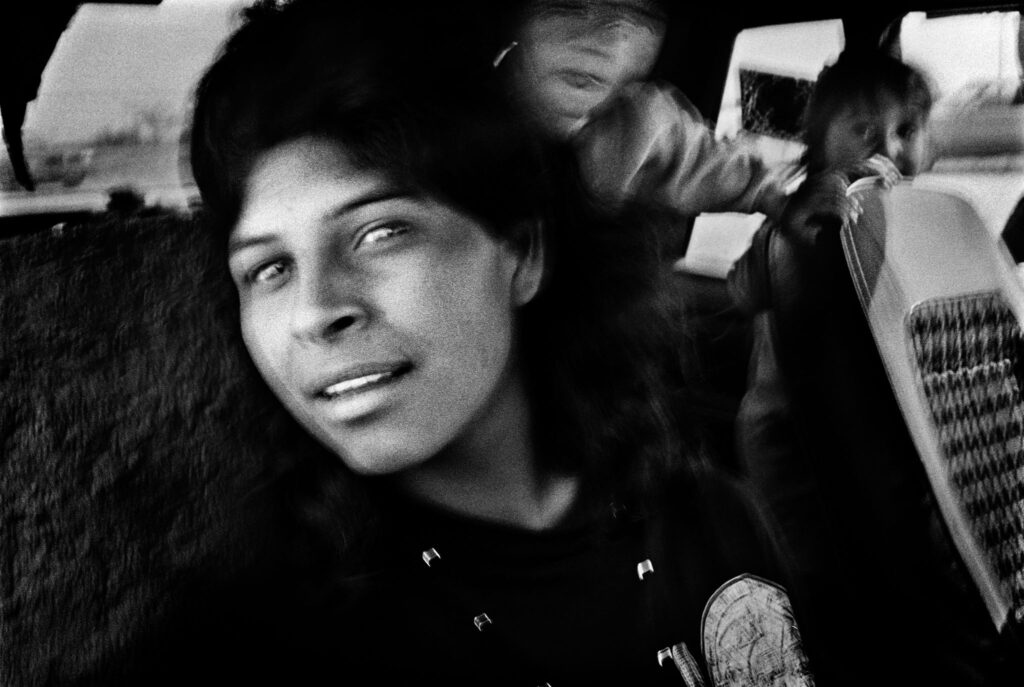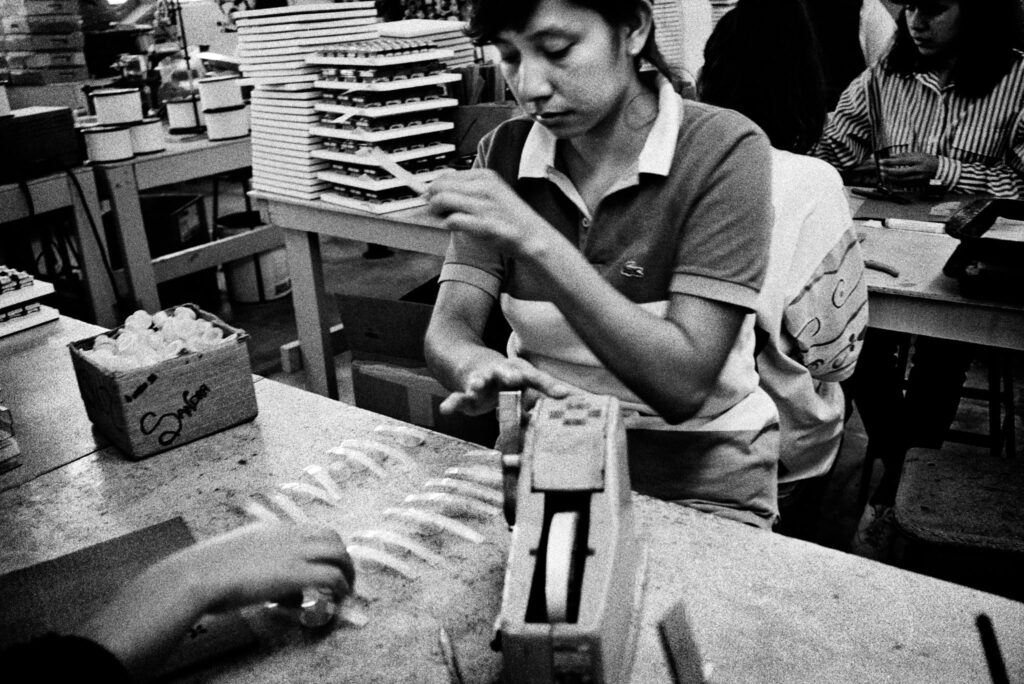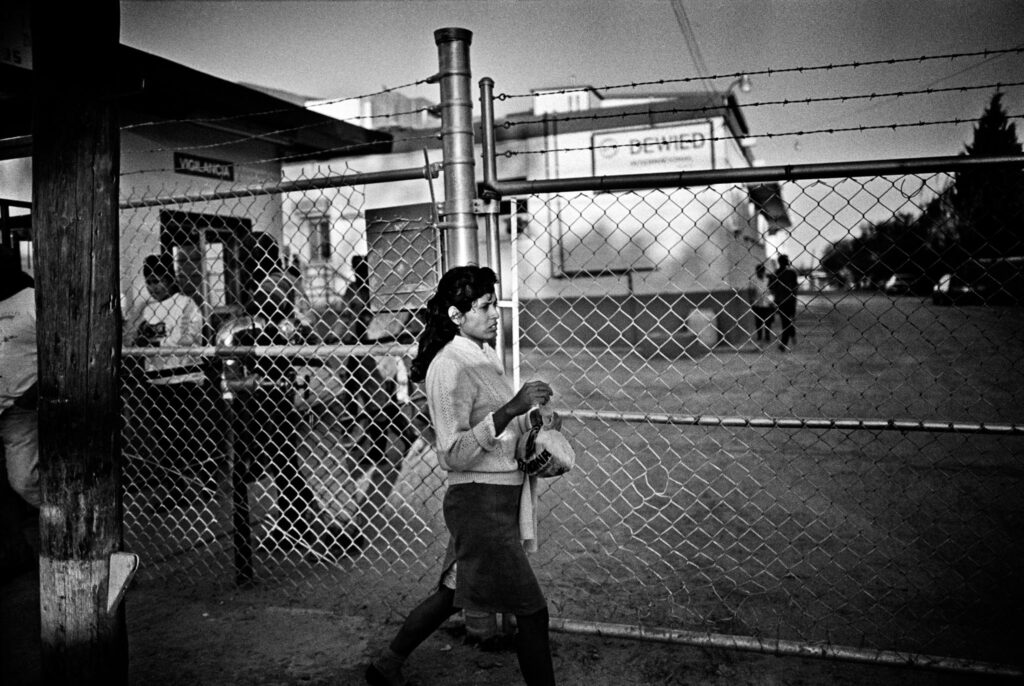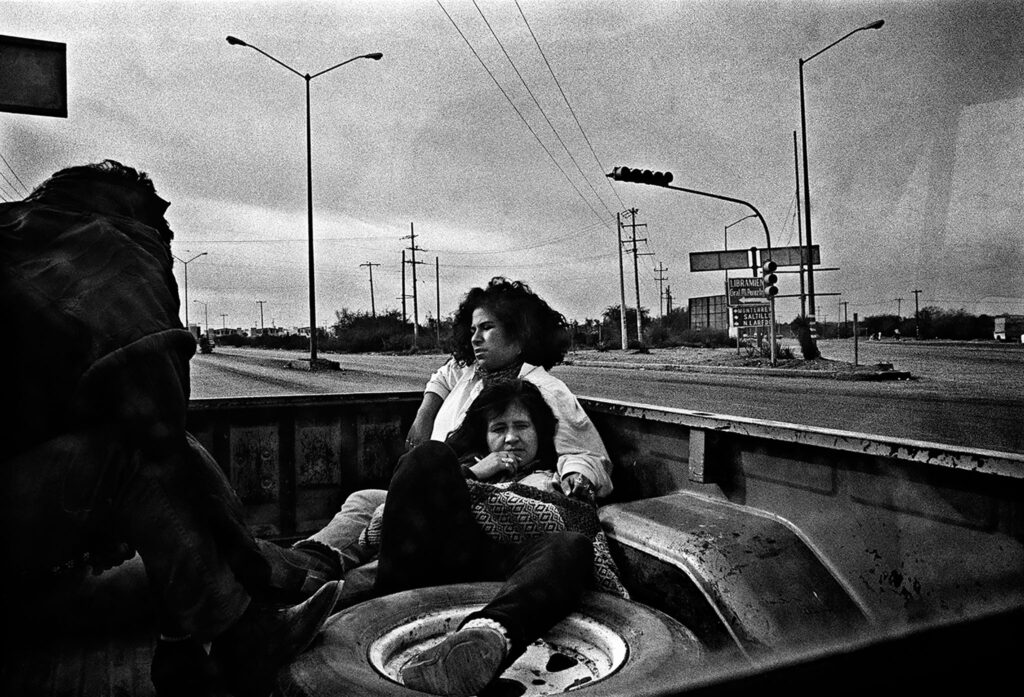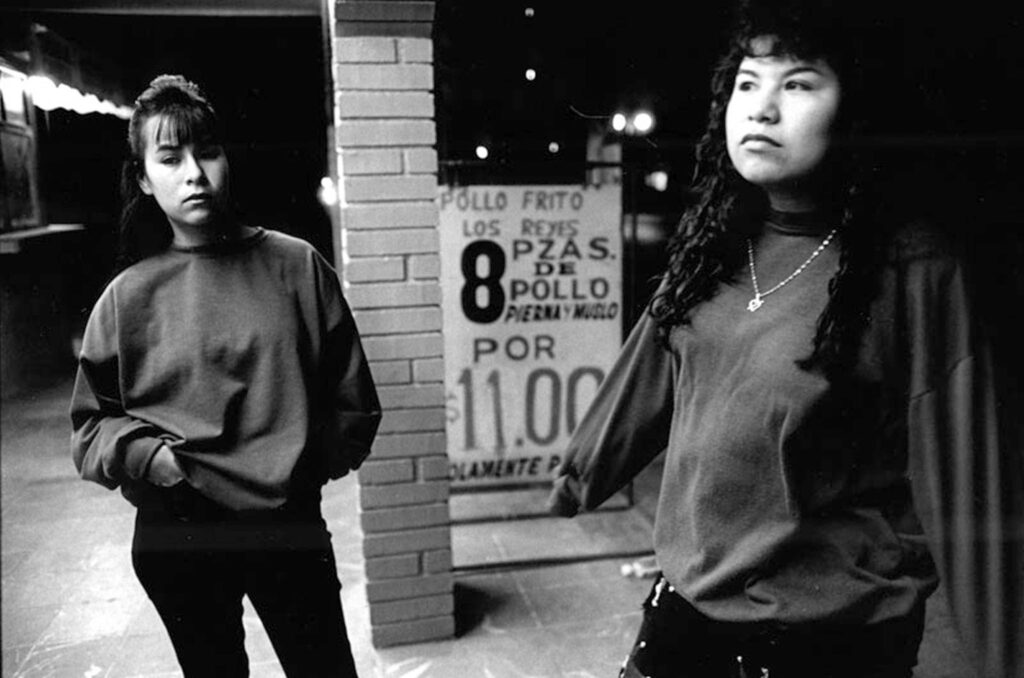Voce ‘e stommache
Lina Pallotta moved to the United States in the late 1980s to study at the International Center of Photography (ICP) in New York in photojournalism and documentary photography. It is there that she undertook intimate and poetic work talking portraits of friends, colleagues, poets and performers for over twenty years.
She subsequently returned to Italy, to Rome, where she continued her activity as an artist, documentary photographer and academic, and where she still lives today. Pallotta’s methodology is to move outside the institutional narratives pursued by the mass media, in search of private stories and psycho-geographical spaces in which glimpses of real life merge with socio-cultural meanings, away from clichés and stereotypes.
In her images we can read a complicity between the author and the subject represented, an empathetic alliance founded on a project of redemption, emancipation and social justice aimed at breaking down the wall of exclusion imposed by anti-progressive visions of society. Her first solo exhibition in an Italian public institution, Volevo vedermi negli occhi at the Centro Pecci in Prato in 2023, was a portrait of Porpora Marcasciano, a transsexual activist, in which Pallotta expressed thirty years of friendship and political militancy.
The photographic works on display are part of a collaborative project with Loredana Rossi, which began in 2011 and was born from a mutual friendship with Marcasciano.
Rossi is the founder and vice-presidentof the ATN – Transsexual Association of Naples,a non-governmental organization that protects the rights, health and dignity of trans people from all forms of discrimination and violence,providing support in the transition and sex change process. During the residency, Pallotta immersed herself in the daily life of Rossi and the community of trans and “femminielli” people of different generations who found in her a point of reference and a source of inspiration in the path of exploration and research of their own gender identity.
Spontaneously, the project arrived in the spaces of the Paul Thorel Foundation, where the artist created her first studio portraits and ventured into the field of color for the first time, to emphasize the many signs of identity search that encompass every aspect of a person’s life.
In Voce ‘e stommache, Pallotta transfers a selection of photographs onto a mirrored surface which reflects in a diaristic style the plurality of stories of the Neapolitan trans community and at the same time contains the bodies of the visitors. In an attempt to shorten the distance between life and narration, the artist chooses to share a sociality marked by discrete moments – from makeup to shopping, from aperitif to event – dotted with gestures of peace, smiles, hugs and a widespread sense of sisterhood.
Baleno International Tongue on Flames
Bogdan Ablozhnyy and Lina Pallotta
from 02.03.2024 to 12.05.2024
It Is All Voice
In 1992, Lina Pallotta began frequenting the East Village clubs where the New York slam scene used to gather. On Wednesdays and Fridays, the weekly appointment for contests and open mic nights was at the Nuyorican Poets Café. Faced with the poetic word performed, embodied, and intertwined with music, Pallotta began to take photographs. She thus became part of an alternative creative community, all gathered around the power of words. These were people driven by social and identity politics, the same scene that Steve Cannon was bringing together around his legendary magazine, A Gathering of The Tribes.
Pallotta pictures Cannon at the bar, next to Reg E. Gaines and a woman smoking. Their gestures are quick, their faces blurred, their words sharp. Perhaps ‘the blind guy’ has just shouted his iconic exhortation to a poet on stage: ‘Read the goddamned poem!’ [1] In the dark backgrounds and sharp lighting of the images captured by Pallotta, the words spoken by the authors become visual. On stage, as in the photographs, debutants alternate with established poets, musicians with militants: Pedro Pietri with Aussie, Janice Erlbaum with Nadine Mozon, and Sapphire with Tish Benson. The relationship with the audience nourishes the spoken word. Glances complicate the performance. The interaction ensures effective communication. The spirited gaze of the poets responds to the ecstatic eyes of the crowd.
The voice connects everyone, and the camera captures everything.
One evening in 1994, the Coney Island freaks arrive at the Nuyorican. The fire-eater spits her snaking tongue of fire from the stage towards the audience. Pallotta captures the moment and with the moment analogy. She decides to name her series of photographs of slam poets, which has been running for a few years now, Tongue on Flames, a variation on the title of a 1990 David Wojnarowicz retrospective. In 1981, the artist, a protagonist of the East Village creative scene who died of AIDS in 1992, had dreamt of filming a fire: ‘I was seeing all this through the viewfinder of the movie camera and recording it. The colours of the flames and the light reflecting against the white wall of the garage were burning first bright oranges and reds, then these phosphorescent blues.’ [2]
Likewise, towards the end of Transparent Things, a 1972 Nabokov novel, the protagonist dreams of a fire: ‘Flames spurted all around and whatever one saw came through scarlet strips of vitreous plastic.’ [3] The Walk (2023) is a sculpture composed of three parallel, supposedly endless rolls of transparent polyester, fabric, and reflective foil. The materials originate from a wall, roll across the floor, and reach the opposite wall. Introducing this work, Bogdan Ablozhnyy evoked another passage from the same Nabokov novel: ‘When we concentrate on a material object, whatever its situation, the very act of attention may lead to our involuntarily sinking into the history of that object. Novices must learn to skim over matter if they want matter to stay at the exact level of the moment. Transparent things, through which the past shines!’ [4]
Ablozhnyy, as Pallotta, explores the documentary potential of photography. For him it is a continuous process of analysis that operates in his life as an artist, inside and outside the studio, as a carnet to note formal complexities, as a documentary support for the analysis of sculptures or installations, or as an output and considered as a final work. The transparent surfaces of The Walk can function as allegories of the photographic act: through the transparent foils, not only the past shines, but also the present fixes. The very presence of the work, and thus of its materials, testifies to the availability and actual subsistence of the space that hosts it: the surface between the two gallery walls.The Walk is a score and can be extended or reduced according to the spacious conditions it is exhibited. The sculpture marks the space it inhabits in the same way a pause in musical notation marks a passage of time.
A few days ago, Ablozhnyy spoke to me about the practices of Laurie Parsons, Marc Camille Chaimowicz, and the early Karen Kilimnik. When in 1990 Parsons had left empty the spaces of her first solo show at the Lorence-Monk Gallery in New York – a mile, twenty-minute walk from the Nuyorican – one reviewer hinted at the implicit invitation of that radical move: ‘Parsons invites us to make the leap and walk on water.’[5] The Walk, on the contrary, invites the viewer not to make that leap, to imagine the walk on water only from a distance, pushing up to the edge of the transparencies with their feet, and then surveying them only with their gaze.
The title of Ablozhnyy’s sculpture is a reference to a 1917 short story by Robert Walser, The Walk. When in 1982 Susan Sontag was asked to introduce the English edition of the story, she insisted on the role of the author’s voice: ‘His work plays with the depressive’s appalled vision of endlessness: it is all voice – musing, conversing, rambling, running on.’ [6] Ablozhnyy’s transparent scrolls, concrete ‘visions of endlessness,’ can maybe fuel the reading of Pallotta’s photographs, in which, as in Walser, ‘it is all voice.’
Giorgio Di Domenico
[1] Melanie Maria Goodreaux: ‘Gathered Tribes: The Legacy of Steve Cannon’, Ursula, November 13, 2019.
[2] David Wojnarowicz, In the Shadow of the American Dream, New York 1998.
[3] Vladimir Nabokov, Transparent Things, New York 1972, ch. 20.
[4] Ivi, ch. 1.
[5] Jan Avgikos: ‘Laurie Parsons, Lorence Monk Gallery’, Artforum, XXIX, 2, October 1990, p. 164.
[6] Susan Sontag: ‘Walser’s Voice’, in Robert Walser, Selected Stories, New York 1982, p. viii.
Baleno InternationaI
Via Montecuccoli 11G, Rome, Italy
https://baleno.international/
email info@baleno.international
Porpora – Cheap Festival
Venticinque poster per venticinque ritratti fotografici. Trent’anni di scatti e in mezzo le lotte, i viaggi, gli incontri, le rivoluzioni incarnate, i libri, le mostre, il rincorrersi da una città all’altra, la politica fatta nelle strade. Un bianco e nero poroso, una grana ostentata come si ostenta una ruga o una cicatrice che ci siamo conquistate. Dopo essere state al centro di una mostra al Centro Pecci per l’Arte Contemporanea, dal titolo Volevo vedermi negli occhi e curata da Elena Magini e Michele Bertolino, una selezione di fotografie di Lina Pallotta che ritraggono Porpora Marcasciano arriva nelle strade di Bologna: è la nuova affissione di CHEAP, il progetto di arte pubblica su poster che festeggia nel 2023 il decennale dalla propria fondazione e lo fa con un libro pubblicato da People e appena arrivato in libreria, DISOBBEDITE con generosità.
Fotografie di Giulia Rosco
Progetto organizzato da CHEAP
Volevo vedermi negli occhi – Centro Pecci Prato
Lina Pallotta, photographer, and Porpora Marcasciano, writer and trans activist, met on the same side of the barricades in the hot city of Naples during the fabulous ’70s and never parted ways. In the ’80s, Pallotta moved to New York City, where she studied at the International Center of Photography and worked as a photojournalist, focusing on projects with a strong political and ethical emphasis. Despite the miles that separated them, the two continued to meet in dispersed geographies, from New York’s East Village to Rome, Bologna, and Naples.
In 1990, Pallotta began photographing Marcasciano with an intimate and affective gaze, using immediate and corporeal touches to capture their relationship. Porpora – the project which is presented here, a selection taken from hundreds of photos – is an in-finite portrait of a friend and companion. A sideways glance captures everyday moments, personal geographies, and the evolution of the body, elucidating the poetry of political action.
Download full text here.
I am I – Grenze Arsenal Fotografici
I am I is a journey into a world inhabited by complex subjects, friendly figures, often irrelevant and invisible to society and the media – marginalized. It is a comprehensive and long-standing exploration – woven from decades-long friendships and recent encounters – an underlying thread that intertwines with my own personal experiences and shapes my perception of the world.
The photographs feature two activists from the Italian trans movement: Valerie Taccarelli, whom I met in Naples during the movements of 1977, and has always been a steadfast and uncompromising trans activist, and Loredana Rossi, who is the founder and president of ATN (Associazione Transessuale Napoli).
These images aim at provoking a reflection on the role and complexities of media representation of marginalized situations. They are snapshots of moments, fragments that challenge the rational analysis of what they aim to document, without imposing a predetermined interpretation of reality. They represent an endeavor to construct a visual space that, without aggression, invites contemplation of the social dimension and our shared humanity.
I will develop a new chapter of I AM I during the residency at the Paul Thorel Foundation in September 2023. In this month, I will shadow Loredana Rossi in her private and public daily life.
We unleash storms, yet we like the sun – Last Tango
The title of the exhibition “We Unleash Storms, Yet We Like the Sun” could be a tag on a wall. Or alternatively it’s that poetic phrase that you would stumble upon while scrolling your tumblr feed, so very millennial, or it’d be the kind of statement printed on some t-shirt, so very fast-fashion and pseudo-punk. Yet, if we travel back in time and we land in the sunny alleys of Naples in the 70s, we could have heard this very phrase in the midst of those busy streets, shouted at the top of the lungs by students, queers and hippies attending protests in rutilant public squares. Let us retrace the timeline in between: a surge of identity politics worldwide and in the specific case of Italy the ebb in the private.
Some contextual elements. The exhibition features works by Lina Pallotta (b. 1955, lives and works in Rome) and Caterina De Nicola (b. 1991, lives and works in Zurich). Two artists who share similar artistic approaches. Photographs dating back to the 90s of Porpora Marcasciano, trans activist and writer, feature alongside embellished walls made of screws and translucent balls scattered on the floor. The never-ending trip of a lifetime in a constant process of pushing borders forward placed side by side with the dysfunctional meltdown of once-useful tools.
Download the text by Michele Bertolino, curator of the exhibition
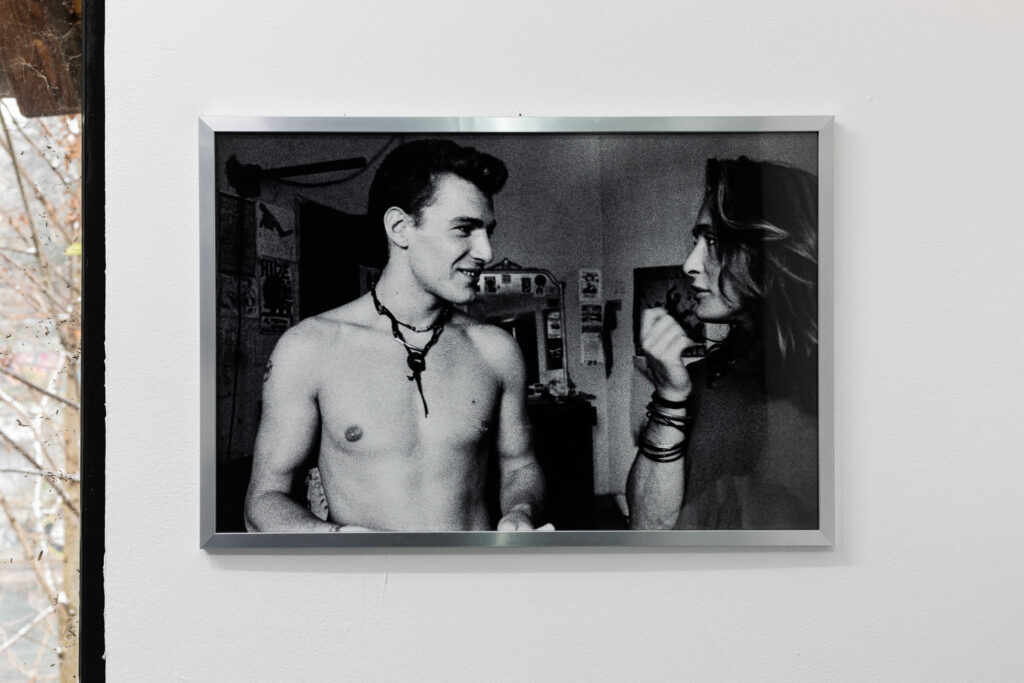 Lina Palotta, Porpora - Porpora e Marco - Roma, 1991, digitally printed on Hahnemuhle FineArt Baryta 325 gr 60 x 40cm. Photo: Kilian Bannwart
Lina Palotta, Porpora - Porpora e Marco - Roma, 1991, digitally printed on Hahnemuhle FineArt Baryta 325 gr 60 x 40cm. Photo: Kilian Bannwart
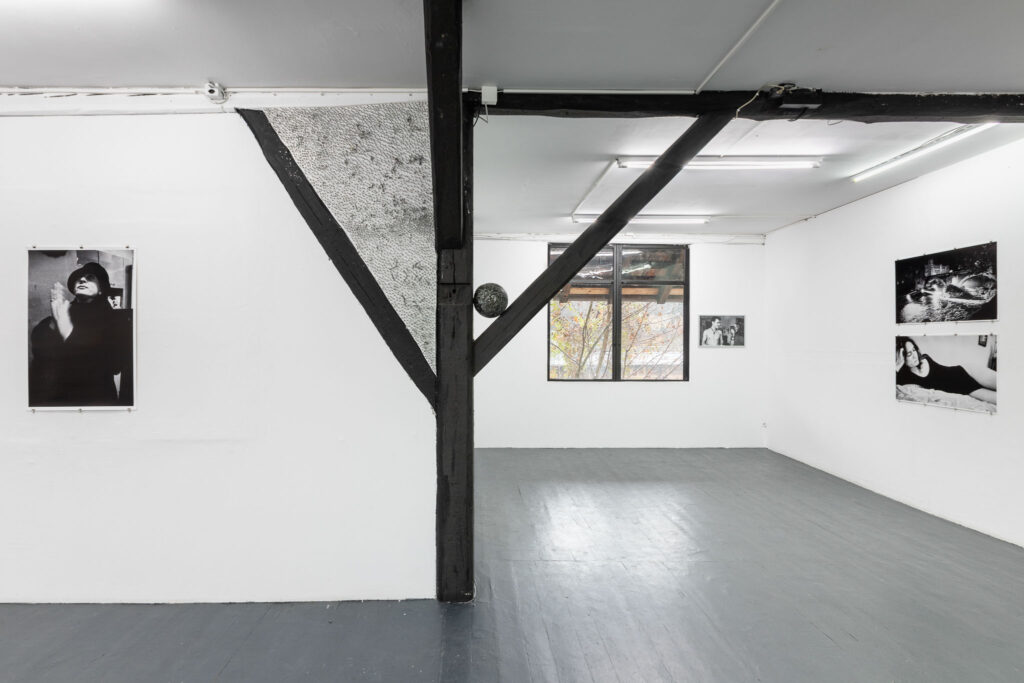 We Unleash Storm Yet We Like The Sun, Installation view, 2022. Photo: Kilian Bannwart
We Unleash Storm Yet We Like The Sun, Installation view, 2022. Photo: Kilian Bannwart
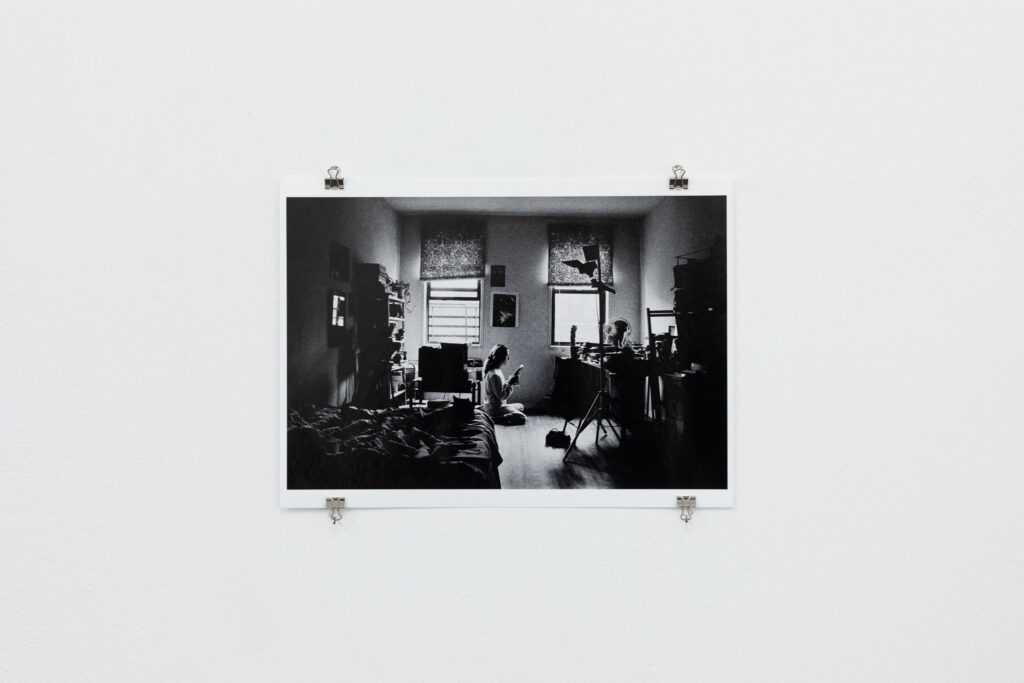 Lina Pallotta, Porpora - NYC, 1992, digitally printed on Hahnemuhle FineArt Baryta 325 gr, 36 x 24cm. Photo: Kilian Bannwart
Lina Pallotta, Porpora - NYC, 1992, digitally printed on Hahnemuhle FineArt Baryta 325 gr, 36 x 24cm. Photo: Kilian Bannwart
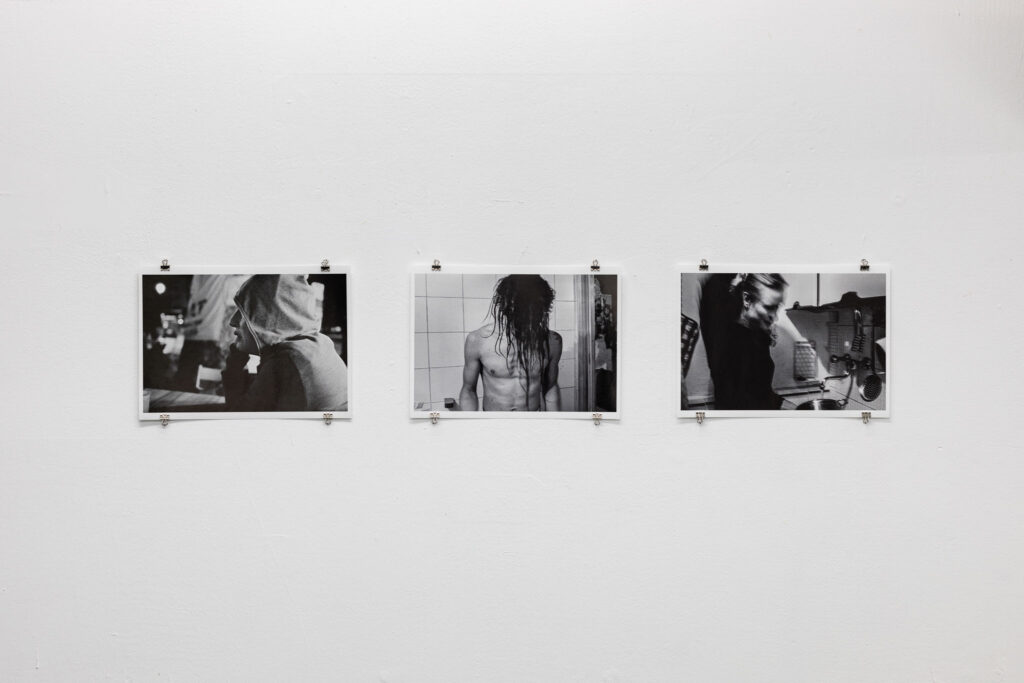 From right to left: Lina Pallotta: Porpora - Roma, 1990, Porpora - Maurizio - Roma, 1990, Porpora - Europride - Roma, 2011. Photo: Kilian Bannwart
From right to left: Lina Pallotta: Porpora - Roma, 1990, Porpora - Maurizio - Roma, 1990, Porpora - Europride - Roma, 2011. Photo: Kilian Bannwart
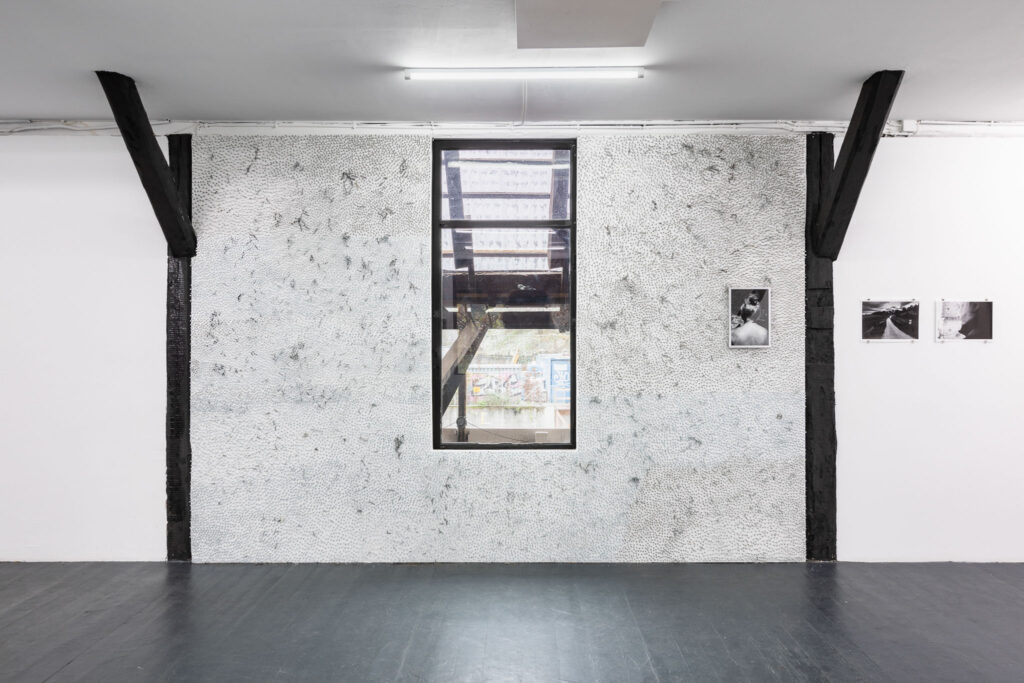 We Unleash Storm Yet We Like The Sun, Installation view, 2022. Photo: Kilian Bannwart
We Unleash Storm Yet We Like The Sun, Installation view, 2022. Photo: Kilian Bannwart
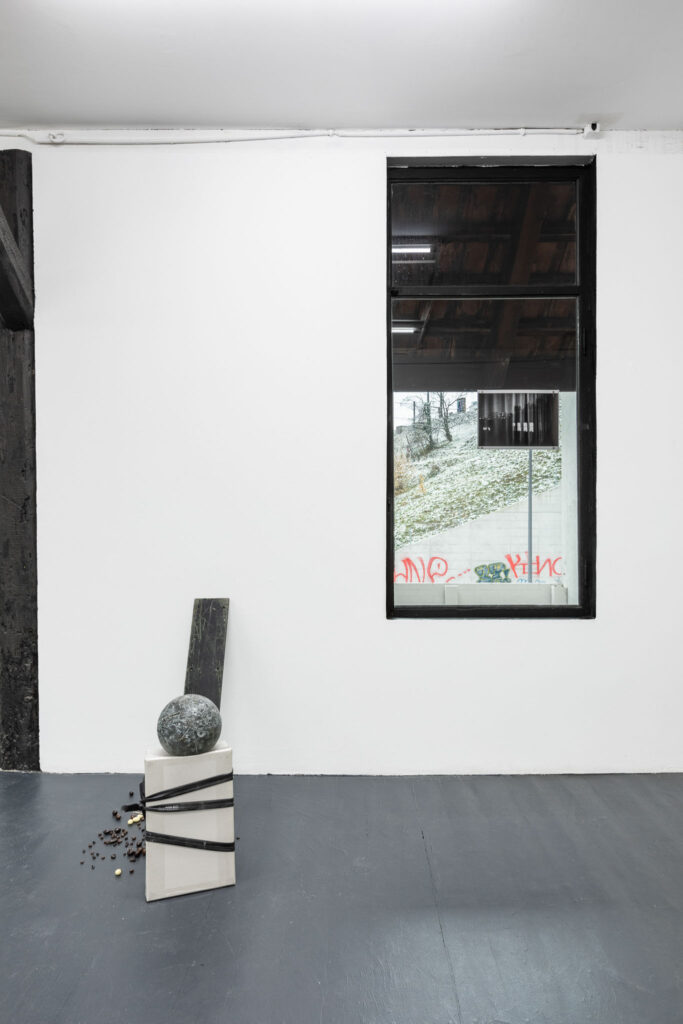 Right: Lina Pallotta, Porpora - Chelsea - NYC, 2011, digitally printed on Hahnemuhle FineArt Baryta 325 gr, 36 x 24cm. Left: Caterina de Nicola, Things you can’t buy: new hours and services, 2022, found objects, spheres made of epoxy resin, screws and metal scraps, dimensions variable. Photo: Kilian Bannwart
Right: Lina Pallotta, Porpora - Chelsea - NYC, 2011, digitally printed on Hahnemuhle FineArt Baryta 325 gr, 36 x 24cm. Left: Caterina de Nicola, Things you can’t buy: new hours and services, 2022, found objects, spheres made of epoxy resin, screws and metal scraps, dimensions variable. Photo: Kilian Bannwart
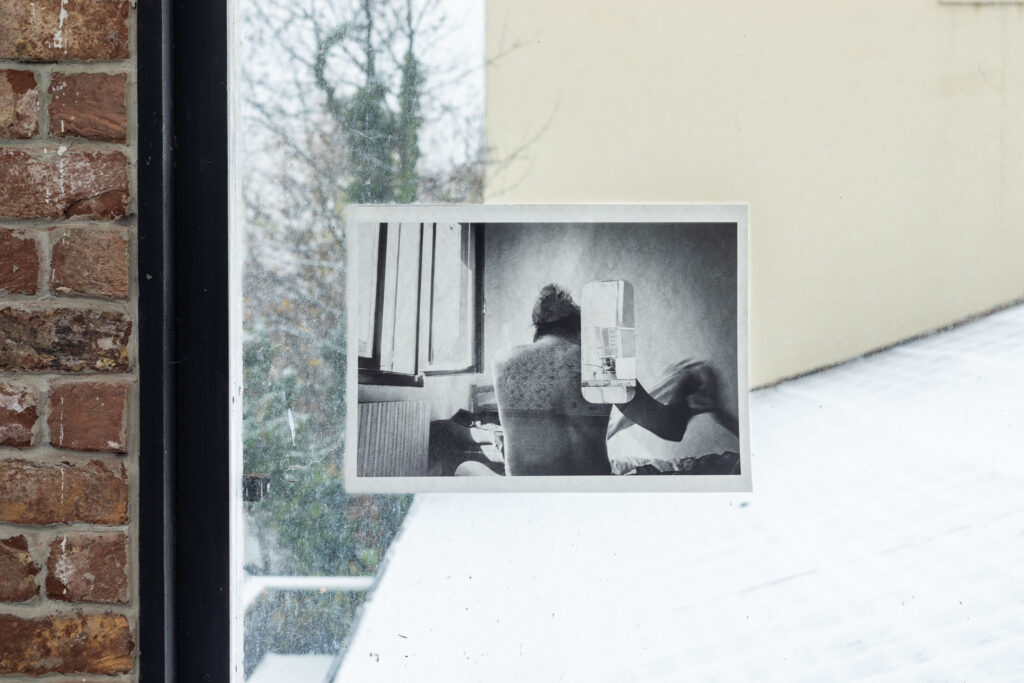 Lina Pallotta, Porpora - Bologna, 2015, digitally printed on Hahnemuhle FineArt Baryta 325 gr, 34 x 26cm. Photo: Kilian Bannwart
Lina Pallotta, Porpora - Bologna, 2015, digitally printed on Hahnemuhle FineArt Baryta 325 gr, 34 x 26cm. Photo: Kilian Bannwart
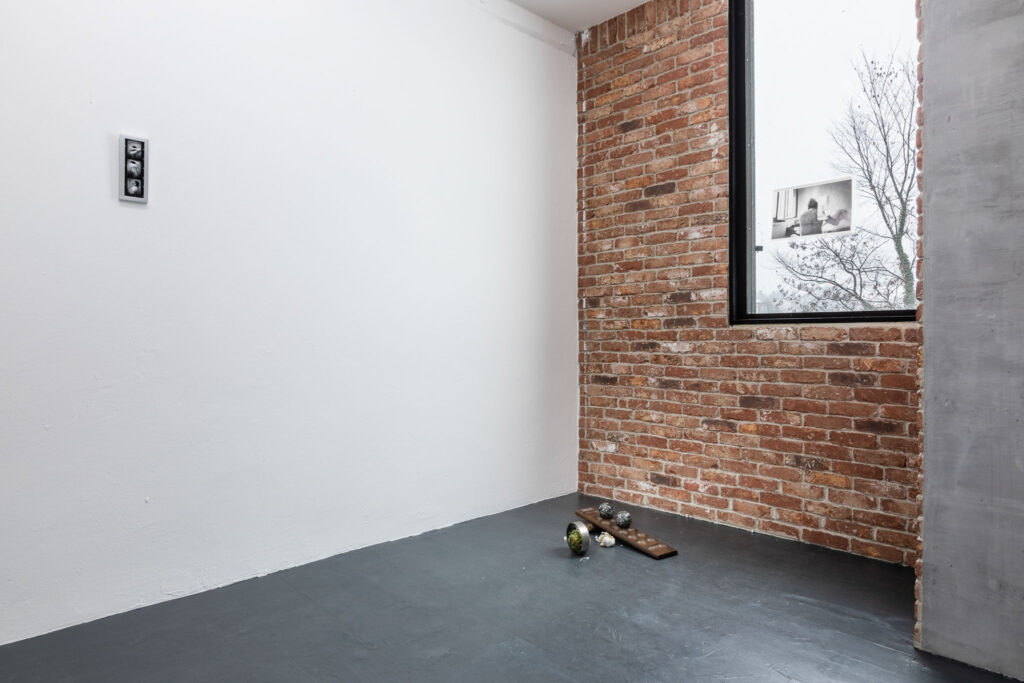 Right: Lina Pallotta, Porpora - Bologna, 2015, digitally printed on Hahnemuhle FineArt Baryta 325 gr, 34 x 26cm. Center: Caterina de Nicola, Things you can’t buy: new hours and services, 2022, found objects, spheres made of epoxy resin, screws and metal scraps, dimensions variable. Left: Lina Pallotta, Porpora - NYC, 2001, digitally printed on Hahnemuhle FineArt Baryta 325 gr 6 x 20cm. Photo: Kilian Bannwart
Right: Lina Pallotta, Porpora - Bologna, 2015, digitally printed on Hahnemuhle FineArt Baryta 325 gr, 34 x 26cm. Center: Caterina de Nicola, Things you can’t buy: new hours and services, 2022, found objects, spheres made of epoxy resin, screws and metal scraps, dimensions variable. Left: Lina Pallotta, Porpora - NYC, 2001, digitally printed on Hahnemuhle FineArt Baryta 325 gr 6 x 20cm. Photo: Kilian Bannwart
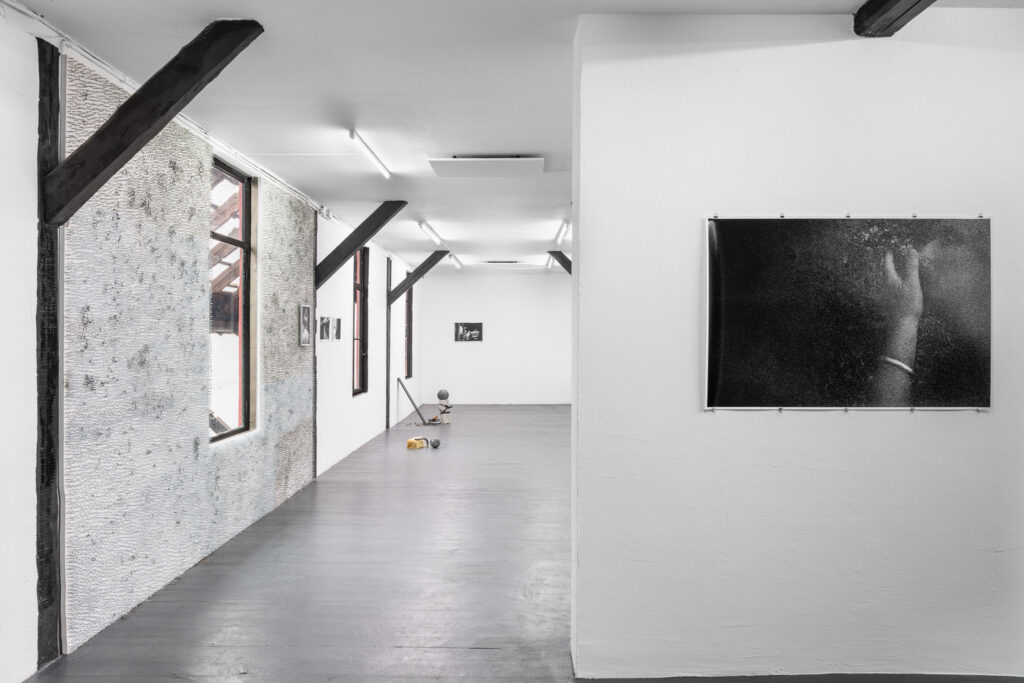 We Unleash Storm Yet We Like The Sun, Installation view, 2022. Photo: Kilian Bannwart
We Unleash Storm Yet We Like The Sun, Installation view, 2022. Photo: Kilian Bannwart
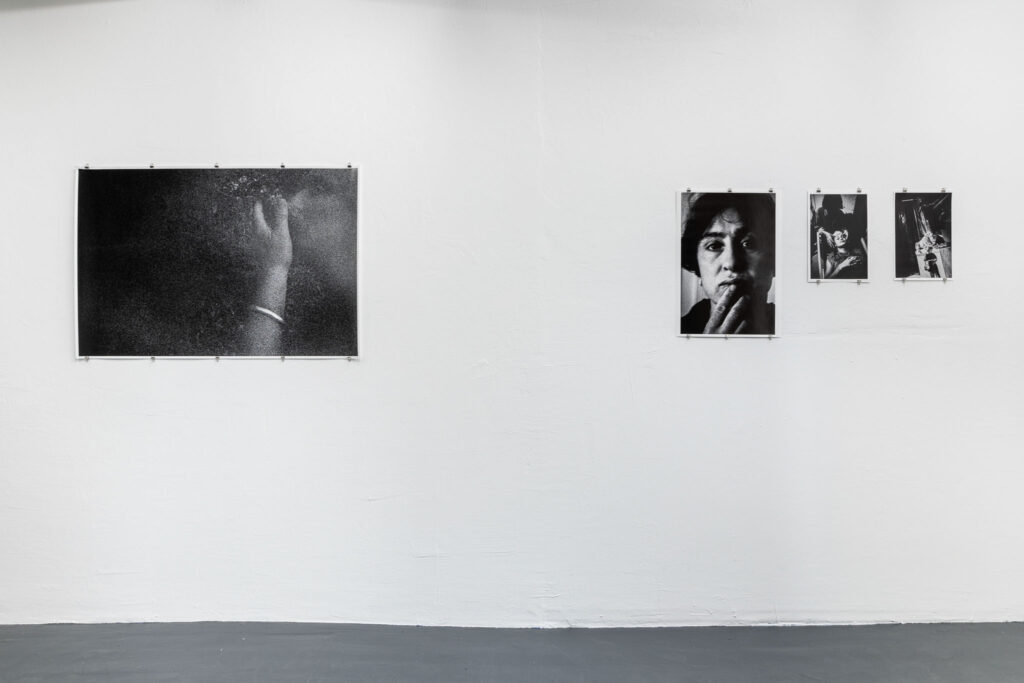 From right to left: Lina Pallotta, Porpora - Cattedrale di San Pietro - Roma, 1996. Lina Pallotta, Porpora - Porpora e Claudia - Lanuvio, 1996. Lina Pallotta, Porpora - San Salvatore Telesino, 2000. Lina Pallotta, Porpora - San Bartolomeo in Galdo, 2018. Photo: Kilian Bannwart
From right to left: Lina Pallotta, Porpora - Cattedrale di San Pietro - Roma, 1996. Lina Pallotta, Porpora - Porpora e Claudia - Lanuvio, 1996. Lina Pallotta, Porpora - San Salvatore Telesino, 2000. Lina Pallotta, Porpora - San Bartolomeo in Galdo, 2018. Photo: Kilian Bannwart
PIEDRAS NEGRAS – RoccaColonna, Castelnuovo Fotografia Festival

